2019-05-02 - Nº 209
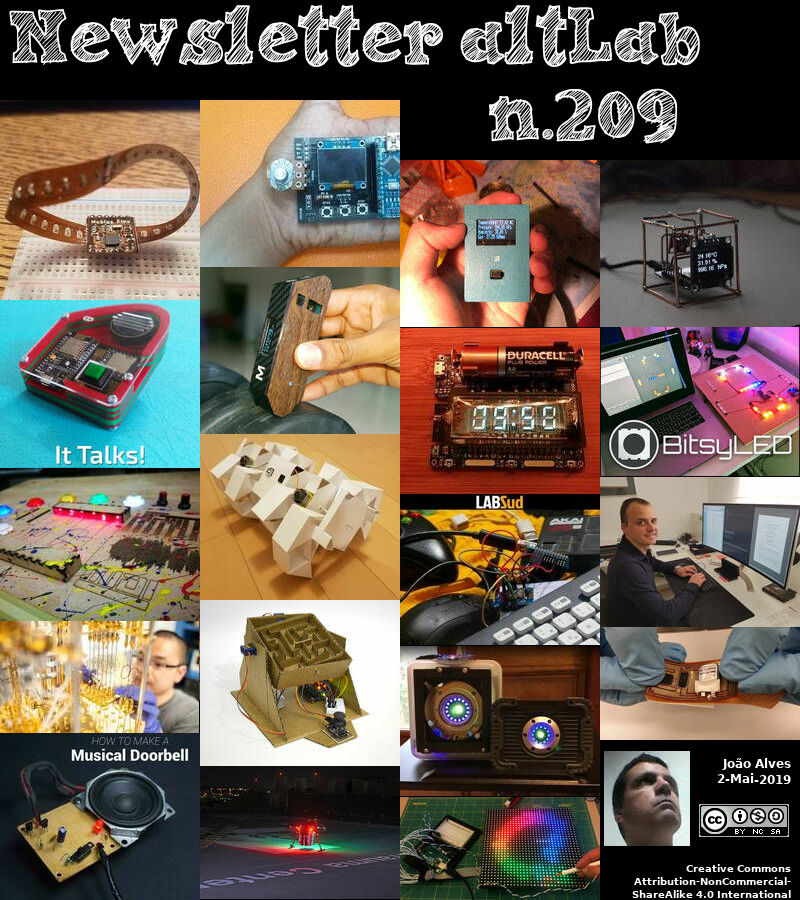
Editorial
Esta é a Newsletter Nº 209 que se apresenta com o mesmo formato que as anteriores. Se gostar da Newsletter partilhe-a!
Todas as Newsletters encontram-se indexadas no link.
Esta Newsletter tem os seguintes tópicos:
Faz hoje anos que nascia, em 1797, Abraham Pineo Gesner. Este Químico e geólogo canadiano foi pioneiro na extracção de querosene (que ele nomeou) pela destilação seca de rocha asfáltica. Ele percebeu a utilidade desse líquido (conhecido como parafina na Inglaterra) como combustível mais limpo em lâmpadas para substituir o óleo de baleia. Ele também inventou um preservante de madeira, um processo de pavimentação de estradas de asfalto, briquetes de pó de carvão compactados e uma máquina para isolar fios eléctricos.
Faz também anos hoje que nascia, em 1802, Heinrich Gustav Magnus. Este químico e físico alemão descobriu o efeito Magnus (a força de sustentação produzida por um cilindro rotativo, que por exemplo, dá a curva a uma bola curva). Na pesquisa química, ele descobriu o primeiro dos compostos de platina-amónio. O sal verde de Magnus é [Pt(NH3)4][PtCl4]). Com interesses diversos na ciência, ele também trabalhou na absorção de gases pelo sangue, na expansão de gases quando aquecidos, nas pressões de vapor de água e em várias soluções, electrólise, correntes induzidas e termoeléctricas, óptica, magnetismo e hidrodinâmica. Em 1865, ele representou a Prússia numa conferência convocada para introduzir um sistema métrico uniforme de pesos e medidas na Alemanha.
Faz igualmente anos hoje que nascia, em 1844, Elijah McCoy. Este inventor e engenheiro afro-americano destacou-se pelas suas 57 patentes americanas, a maioria das quais tem a ver com a lubrificação de motores a vapor.
Faz também anos hoje que nascia, em 1868, Robert W. Wood. Este Físico americano fotografou o reflexo das ondas sonoras no ar e investigou os efeitos fisiológicos das ondas sonoras de alta frequência. A placa de zona que ele criou poderia substituir a lente objectiva de um telescópio. Ele inventou uma grade de difracção melhorada, fez pesquisas em espectroscopia e ampliou a técnica de espectroscopia Raman (um método para estudar matéria usando a luz espalhada por ela). Ele fez fotografias a mostrar a radiação infravermelha e ultravioleta e foi o primeiro a fotografar fluorescência ultravioleta. Wood foi o primeiro a observar o fenómeno de emissão de campo no qual partículas carregadas são emitidas de condutores num campo eléctrico.
Por fim, faz anos hoje que nascia, em 1947, James Dyson. Este Engenheiro e inventor inglês é conhecido pelas suas invenções que incluem o aspirador sem saco Dual Cyclone e o secador de mãos Airblade. Ele fundou a Dyson Research Ltd. em 1979. Desde 1970, quando reinventou o carrinho de mão como seu Ballbarrow, ele procurou criar novos produtos que funcionassem melhor do que qualquer coisa antes deles. Ele lançou um aspirador de pó sem saco fabricado e vendido no Japão em 1986. Quando foi introduzido na Grã-Bretanha em 1993, o seu aspirador de pó tornou-se o mais vendido no início de 1995. Da mesma forma, quando vendido nos EUA a partir de 2002, capturou 20% do mercado.
Nesta semana que passou uma equipa de cientistas anunciou que estão a preparar-se para a passagem de um asteróide dentro de uma década. A aproximação do Apophis em 2029 será uma oportunidade incrível para a ciência dizem os cientistas. É raro um asteróide deste tamanho passar tão perto da Terra. Embora os cientistas tenham visto pequenos asteróides, na ordem de 5 a 10 metros, passando pela Terra a uma distância similar, os asteróides do tamanho de Apophis são muito menos numerosos e, portanto, não passam tão perto da Terra quanto costumam. O asteróide Apophis tem um diâmetro de 370 metros e foi descoberto em 2004.
Também esta semana foi lançada a nova versão do sistema Fedora. A versão 30 conta como principais novidades o Gnome 3.32, o GCC 9, o Bash 5.0 e a glibc to 2.29.
Ainda esta semana ficámos a saber que programadores resolvem enigma criptográfico com 20 anos do MIT. Bernard Fabrot passou os últimos três anos e meio a tentar encontrar a solução para um quebra-cabeça anunciado pela primeira vez pelos pesquisadores do MIT em 1999. Separadamente, outra equipa liderada pelo executivo de tecnologia Simon Peffers está prestes a concluir uma solução. O quebra-cabeça envolve essencialmente fazer cerca de 80 triliões de quadraturas sucessivas sobre um número inicial, e foi especificamente projectado para evitar que alguém tente resolvê-lo mais rapidamente usando a computação paralela. Fabrot e Peffers adoptaram abordagens muito diferentes para o desafio. Fabrot usou um Intel Core i7-6700 simples, encontrado em PCs de consumo, e calculou a solução usando a Biblioteca Aritmética de Precisão Múltipla GNU (GMP). Por outro lado, a equipa de Peffers usou um novo algoritmo de multiplicação (projectado por Erdinç Öztürk da Universidade de Sabanci) para ser executado num acelerador de hardware programável chamado FPGA. A equipa, que está a trabalhar como parte de uma colaboração chamada Cryptophage, está no caminho certo para terminar o quebra-cabeça a 11 de maio, após apenas dois meses de computação. No anúncio original, a LCS prometeu que, se uma solução correta fosse apresentada, eles abririam uma “cápsula do tempo” especial projectada pelo arquitecto Frank Gehry e repleta de artefactos históricos do inventor da Web Tim Berners-Lee, do co-inventor da Ethernet, Bob Metcalfe e do fundador da Microsoft, Bill Gates. A cerimonia da abertura da cápsula acontecerá na quarta-feira, 15 de maio, às 16h. no Stata Center do MIT.
Na Newsletter desta semana apresentamos diversos projetos de maker.
Esta Newsletter encontra-se mais uma vez disponível no sistema documenta do altLab. Todas as Newsletters encontram-se indexadas no link.
 João Alves ([email protected])
João Alves ([email protected])
O conteúdo da Newsletter encontra-se sob a licença  Creative Commons Attribution-NonCommercial-ShareAlike 4.0 International License.
Creative Commons Attribution-NonCommercial-ShareAlike 4.0 International License.
Novidades da Semana

Black Hole's Tug on Space Pulls Fast-Moving Jets in Rapid Wobble
"Jets of fast-moving material shot from the area surrounding a black hole are wobbling so fast that their change in direction can be seen in periods as short as minutes, and astronomers say it’s happening because the rotating black hole’s powerful gravitational pull is dragging nearby space itself along with it. “We’ve never seen this effect happening on such short timescales,” said James Miller-Jones, of the Curtin University node of the International Centre for Radio Astronomy Research (ICRAR), who led a team using the National Science Foundation’s Very Long Baseline Array (VLBA). The team studied V404 Cygni, a black hole nine times more massive than the Sun, nearly 8,000 light-years from Earth. The black hole is drawing in material from a companion star with a mass about 70 percent that of the Sun. As the material streams toward the black hole, it forms a rotating disk, called an accretion disk, surrounding the black hole. In such systems, the disk becomes denser and hotter with decreasing distance from the black hole." [...]

Scientists Planning Now for Asteroid Flyby a Decade Away
"On April 13, 2029, a speck of light will streak across the sky, getting brighter and faster. At one point it will travel more than the width of the full Moon within a minute and it will get as bright as the stars in the Little Dipper. But it won't be a satellite or an airplane - it will be a 1,100-foot-wide (340-meter-wide) near-Earth asteroid called 99942 Apophis that will cruise harmlessly by Earth, about 19,000 miles (31,000 kilometers) above the surface. That's within the distance that some of our spacecraft that orbit Earth. The international asteroid research community couldn't be more excited. This week at the 2019 Planetary Defense Conference in College Park, Maryland, scientists are gathering to discuss observation plans and science opportunities for the celestial event still a decade away." [...]

Announcing the release of Fedora 30
"It seems like it was just six months ago that we announced Fedora 29, and here we are again. Today, we announce our next operating system release. Even though it went so quickly, a lot has happened in the last half year, and you’ll see the results in Fedora 30. If you’re impatient, go to https://getfedora.org/ now. For details, read on. Variants and more Fedora Editions are targeted outputs geared toward specific “showcase” uses." [...]
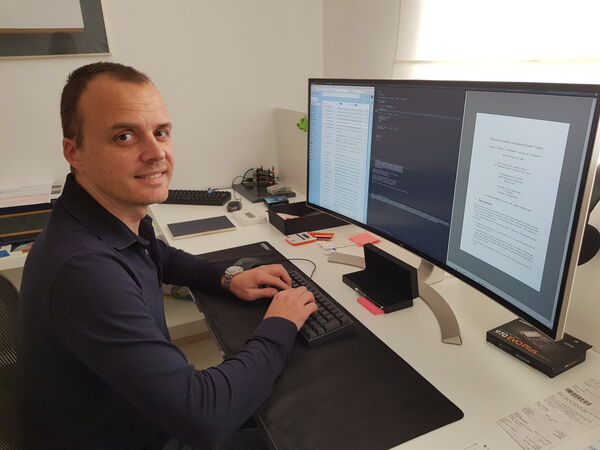
Programmers solve MIT's 20-year-old cryptographic puzzle
"This week MIT’s Computer Science and Artificial Intelligence Laboratory (CSAIL) announced that a 20-year-old cryptographic puzzle was just solved by a self-taught programmer from Belgium, 15 years earlier than MIT scientists expected. Bernard Fabrot spent the last three and a half years computing the solution to a puzzle first announced by MIT researchers in 1999. Separately, another team led by tech executive Simon Peffers is nearing completion of computing a solution. The puzzle essentially involves doing roughly 80 trillion successive squarings of a starting number, and was specifically designed to foil anyone trying to solve it more quickly by using parallel computing. Fabrot and Peffers took very different approaches to the puzzle. Fabrot used a simple Intel Core i7-6700 found in consumer PCs, and computed the solution using the GNU Multiple Precision Arithmetic Library (GMP)." [...]
Outras Notícias

Introducing Mozilla WebThings
"The Mozilla IoT team is excited to announce that after two years of development and seven quarterly software updates that have generated significant interest from the developer & maker community, Project Things is graduating from its early experimental phase and from now on will be known as Mozilla WebThings. Mozilla’s mission is to “ensure the Internet is a global public resource, open and accessible to all. An Internet that truly puts people first, where individuals can shape their own experience and are empowered, safe and independent.” The Mozilla IoT team’s mission is to create a Web of Things implementation which embodies those values and helps drive IoT standards for security, privacy and interoperability. Mozilla WebThings is an open platform for monitoring and controlling devices over the web, including: WebThings Gateway – a software distribution for smart home gateways focused on privacy, security and interoperability WebThings Framework – a collection of reusable software components to help developers build their own web things We look forward to a future in which Mozilla WebThings software is installed on commercial products that can provide consumers with a trusted agent for their “smart”, connected home. WebThings Gateway 0.8 The WebThings Gateway 0.8 release is available to download from today. If you have an existing Things Gateway it should have automatically updated itself." [...]
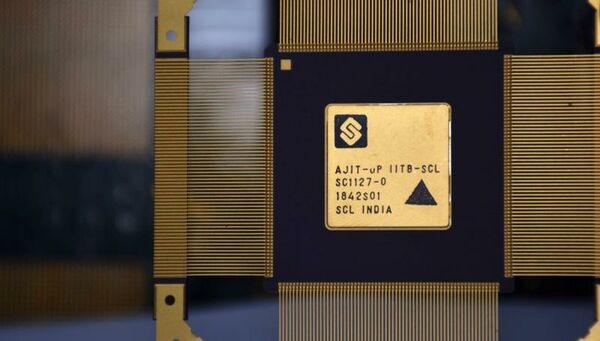
Welcome AJIT, a 'Made in India' Microprocessor
"India’s electronics market is in its biggest boom ever. Fuelled by the demand for electronic devices, it is expected to reach a whopping $400 billion by 2020. Most of the electronic devices we use are imported; only a quarter of the devices are produced in the country. According to statistics, electronic goods in India account for more than 10% of total imports, second only to petroleum products! One electronic equipment that is almost always imported is the microprocessor—the ‘brain’ of an electronic device. A microprocessor is an integrated circuit (IC) that contains a few millions of transistors (semiconductor-based electronic devices) fused on a semiconductor chip." [...]

Mystery of the Universe's Expansion Rate Widens With New Hubble Data
"Astronomers using NASA's Hubble Space Telescope say they have crossed an important threshold in revealing a discrepancy between the two key techniques for measuring the universe's expansion rate. The recent study strengthens the case that new theories may be needed to explain the forces that have shaped the cosmos. A brief recap: The universe is getting bigger every second. The space between galaxies is stretching, like dough rising in the oven. But how fast is the universe expanding? As Hubble and other telescopes seek to answer this question, they have run into an intriguing difference between what scientists predict and what they observe." [...]
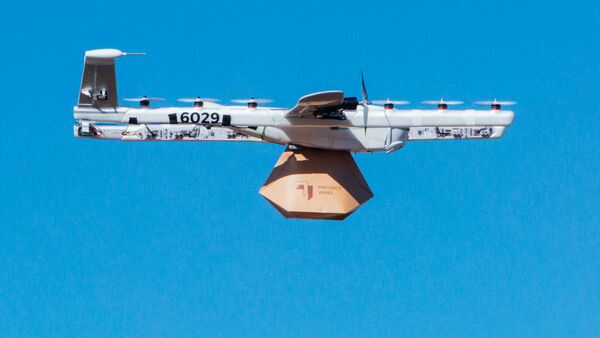
FAA Certifies Google's Wing Drone Delivery Company To Operate As An Airline
"The Federal Aviation Administration has certified Alphabet's Wing Aviation to operate as an airline, in a first for U.S. drone delivery companies. Wing, which began as a Google X project, has been testing its autonomous drones in southwest Virginia and elsewhere. "Air Carrier Certification means that we can begin a commercial service delivering goods from local businesses to homes in the United States," Wing said in a statement posted to the Medium website. The company has touted many advantages of using unmanned drones to deliver packages, from reducing carbon emissions and road congestion to increasing connections between communities and local businesses. "This is an important step forward for the safe testing and integration of drones into our economy. Safety continues to be our Number One priority as this technology continues to develop and realize its full potential," Secretary of Transportation Elaine L. Chao said in a statement from the agency." [...]

FCC approves SpaceX's plans to fly internet-beaming satellites in a lower orbit
"The Federal Communications Commission has approved SpaceX’s request to fly a large swath of its future internet-beaming satellites at a lower orbit than originally planned. The approval was a major regulatory hurdle the company needed to clear in order to start launching its first operational satellites from Florida next month. In November, SpaceX sent a request to the FCC to partially revise plans for the company’s satellite internet constellation, known as Starlink. Under SpaceX’s original agreement with the commission, the company had permission to launch 4,425 Starlink satellites into orbits that ranged between 1,110 to 1,325 kilometers up. But then SpaceX decided it wanted to fly 1,584 of those satellites in different orbits, thanks to what it had learned from its first two test satellites, TinTin A and B. Instead of flying them at 1,150 kilometers, the company now wants to fly them much lower at 550 kilometers." [...]
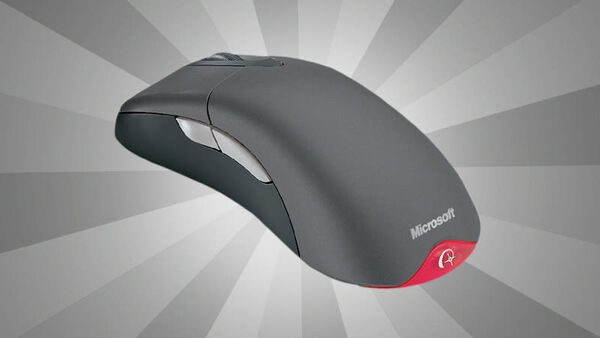
20 Years Ago, Microsoft Changed How We Mouse Forever
"Twenty years ago, in April 1999, Microsoft introduced an update to its IntelliMouse line of input devices. On top it didn’t look much different than its predecessors—it still had a few buttons and a scroll wheel—but underneath it introduced a technology to the masses that brought an end to the prehistoric days of cleaning dirt and grime out of computer mice. I was a third-year college student at that point, and my digital media program had me spending endless hours in Photoshop, version 5.5, purchased with a much-welcomed student discount. My classes weren’t textbook dependent, which left money for pricey photo-editing software, and a desktop workstation that while powerful at the time, would be laughable today (16MB of RAM baby!). What wasn’t in the budget was a fancy Wacom tablet, which was still primarily targeted at professionals with budgets that could afford such luxuries. I was stuck using a mouse, which at the time relied on an archaic rubber-coated metal ball to translate my hand motions to the cursor on the screen." [...]
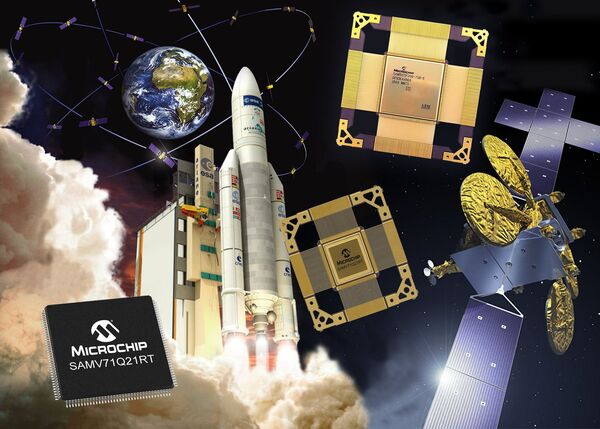
Scale Space Applications with COTS-to-Radiation-Tolerant and Radiation-Hardened Arm Core MCUs
"Devices enable designers to begin development with a commercial device before moving to different levels of radiation-qualified versions, reducing development time and costs. From NewSpace to critical space missions, designers of space applications need to reduce design cycles and costs while scaling development across missions with different radiation requirements. To support this trend, Microchip Technology Inc. (Nasdaq: MCHP) today introduced the space industry’s first Arm®-based microcontrollers (MCUs) that combine the low-cost and large ecosystem benefits of Commercial Off-the-Shelf (COTS) technology with space-qualified versions that have scalable levels of radiation performance. Based on the automotive-qualified SAMV71, the SAMV71Q21RT radiation-tolerant and SAMRH71 radiation-hardened MCUs implement the widely deployed Arm® Cortex®-M7 System on Chip (SoC), enabling more integration, cost reduction and higher performance in space systems. The SAMV71Q21RT and SAMRH71 allow software developers to begin implementation with the SAMV71 COTS device before moving to a space-grade component, significantly reducing development time and cost. Both devices can use the SAMV71’s full software development toolchain, as they share the same ecosystem including software libraries, Board Support Package (BSP) and Operating System (OS) first level of porting." [...]
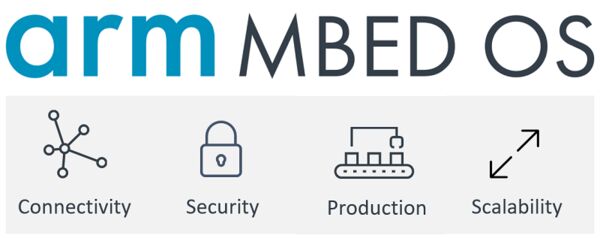
Mbed OS 5.12.2 released
"We are pleased to announce the Mbed OS 5.12.2 release is now available. This is the latest patch release based on the feature set that Mbed OS 5.12 introduces. Summary In this release we have added target support for: ARM_MPS2_M3, ARM_MPS2_M4 and ARM_MPS2_M7. The following reported issues have been fixed: 8411 VSCode exporter with zip option: .vscode directory not included in zipfile 875 mbed complie can't find ARM complier 6 in the PATH with quotes 10049 DISCO_F746NG QSPI WriteEnable might Fail on IAR8 9578 Mbed-OS build fails for FUTURE_SEQUANA/family of targets with ARM Compiler 6.11 10107 OS2 ARM build is no more possible 10109 map file extraction is failing with GCC and M33 9069 M487: Crash report test failed in IAR 10352 ATHandler.cpp malloc undefined 10242 Mbed error info not printed with mbed-os-5.12.0 10344 Printing fault information fails if console is not initialized 9106 Wait() function causes system to hang on STM32F0(91RC) 5467 Export: uvision5 + STM32 does not flash 10360 Inconsistent Licensing Information We have: enabled low-power ticker and sleep HAL API for FastModels. provided a basic driver for Quectel EC25/EC21 reactivated the data cache for i.MX RT1050 updated mbed-cloud-sdk to 2.0.6 There are also a number of other fixes and code improvements. For full details of this and previous releases, please visit our releases page." [...]
Ciência e Tecnologia

Caffeine Cranks Up Solar Cells
"Caffeine makes perovskite photovoltaics more stable, enhancing their commercial potential. Electronics must perform and endure for 1,000 hours at 85 °C to pass a standard accelerated lifetime test. Coffee is best served at 85 °C—a fact that’s built right into the name of the fast-growing 85°C Bakery Café chain. Just another meaningless coincidence? Not for the photovoltaics researchers at the University of California in Los Angeles. For them, 85 degrees was a clue hiding in plain sight." [...]

IBM to Develop an AI-Powered IoT Solution to Help Clients Manage and Monitor Aging Bridges, Tunnels, Highways and Railways
"At IBM's IoT Exchange, IBM (NYSE: IBM) today announced a collaboration with Sund & Bælt — which owns and operates some of the largest infrastructure in the world — to assist in IBM's development of an AI-powered IoT solution designed to help prolong the lifespan of aging bridges, tunnels, highways, and railways. The new industry solution, IBM Maximo for Civil Infrastructure, further extends the IBM Maximo portfolio while providing deep industry and task-specific functionality to help organizations manage, monitor and administer their infrastructure assets. Deteriorating infrastructure is a global challenge. Organizations struggle with aging facilities, the difficulty of physical inspections and high cost of continued maintenance. According to the American Road & Transportation Builders Association 2019 Bridge Report, in the United States, 47,052 bridges are considered "structurally deficient." Today's announcement leverages Sund & Bælt's operational expertise with IBM's Maximo Enterprise Asset Management and Asset Performance Management (APM) solutions, to help extend the lifespan of infrastructure and reduce overall maintenance costs." [...]
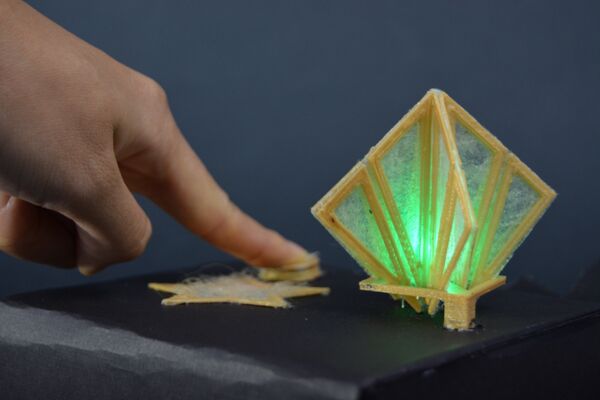
Desktop Electrospinning: A Single Extruder 3D Printer for Producing Rigid Plastic and Electrospun Textiles
"We present a new type of 3D printer that combines rigid plastic printing with melt electrospinning– a technique that uses electrostatic forces to create thin fibers from a molten polymer. Our printer enables custom-shaped textile sheets (similar in feel to wool felt) to be produced alongside rigid plastic using a single material (PLA) in a single process. We contribute open-source firmware, hardware specifications, and printing parameters to achieve melt electrospinning. Our approach offers new opportunities for fabricating interactive objects and sensors that blend the flexibility, absorbency and softness of produced electrospun textiles with the structure and rigidity of hard plastic for actuation, sensing, and tactile experiences. " [...]

HKUST Physicist Contributes to New Record of Quantum Memory Efficiency Bringing Quantum Computers Closer to Reality
"A joint research team of The Hong Kong University of Science and Technology (HKUST) and The South China Normal University (SCNU) has set a new record of photonic quantum memory efficiency, pushing quantum computation a step closer to reality. Like memories in computers, quantum memories are essential components for quantum computers – a new generation of data processors that obey quantum mechanics laws and can overcome the limitations of classical computers. They may push boundaries of fundamental science and help create new drugs, explain cosmological mysteries, or enhance accuracy of forecasts and optimization plans with their potent computational power. Quantum computers are expected to be much faster and more powerful than their traditional counterparts as information is calculated in qubits – which unlike the older units (bits) used in classical computers, can represent both 0 and 1 at the same time. Photonic quantum memories allow for the storage and retrieval of flying single-photon quantum states. However, production of such highly-efficient quantum memories remains a major challenge as it requires perfectly matched photon-matter quantum interface." [...]
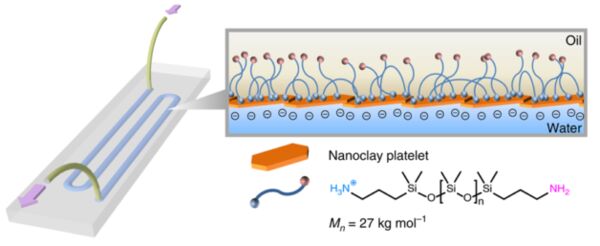
Bridge Over Coupled Waters: Scientists 3D-Print All-Liquid 'Lab on a Chip'
"Berkeley Lab researchers set the stage for new class of 3D-printed, all-liquid devices; could automate chemical synthesis for batteries and drug formulations Researchers at DOE’s Lawrence Berkeley National Laboratory (Berkeley Lab) have 3D-printed an all-liquid device that, with the click of a button, can be repeatedly reconfigured on demand to serve a wide range of applications – from making battery materials to screening drug candidates. “What we demonstrated is remarkable. Our 3D-printed device can be programmed to carry out multistep, complex chemical reactions on demand,” said Brett Helms, a staff scientist in Berkeley Lab’s Materials Sciences Division and Molecular Foundry, who led the study. “What’s even more amazing is that this versatile platform can be reconfigured to efficiently and precisely combine molecules to form very specific products, such as organic battery materials.” The study’s findings, which were reported in the journal Nature Communications, is the latest in a series of experiments at Berkeley Lab that fabricate all-liquid materials with a 3D printer. Last year, a study co-authored by Helms and Thomas Russell, a visiting researcher from the University of Massachusetts at Amherst who leads the Adaptive Interfacial Assemblies Toward Structured Liquids Program in Berkeley Lab’s Materials Sciences Division, pioneered a new technique for printing various liquid structures – from droplets to swirling threads of liquid – within another liquid. “After that successful demonstration, a bunch of us got together to brainstorm on how we could use liquid printing to fabricate a functioning device,” said Helms." [...]
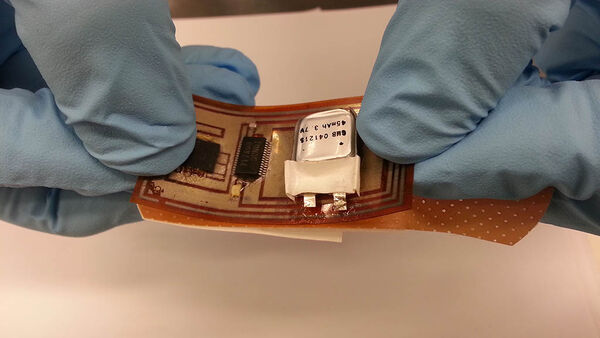
Putting the sense in materials
"An interdisciplinary initiative is helping KAUST be at the forefront of a digital revolution, where sensors can find a use just about anywhere. The ability to track minuscule but important changes across a range of systems—from the body to the borough and beyond—seems limitless with the emerging array of novel devices that are tiny, self-powering and wirelessly connected. KAUST’s Sensor Initiative comprises a broad range of experts, from marine scientists to electrical engineers, who are innovating solutions to some of the most challenging obstacles in sensor technology. Together, they are powering up to transform the exciting intersection between small interconnected devices and the world around us. Capacity to monitor our surroundings also reveals new potential in environmental and community protection. For example, a sensor that can detect a flood or a fire can save lives; a sensor that can track animals could help to better manage an ecosystem; and a sensor that can read plant condition could promote sustainable farming." [...]
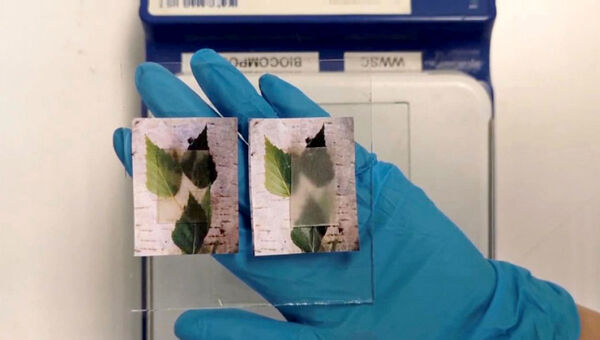
This "glass" is made of wood, and you can control how much heat it conducts
"Researchers from KTH have developed a window material made of wood that regulates how much heat it lets in – and out. A newly-developed thermal energy-storing transparent wood was unveiled this week at the annual conference of the American Chemical Society in Orlando, Florida, by researchers from KTH's Wallenberg Wood Science Center. The see-through wood technology aims to answer a need in the construction industry for functional load-bearing materials that can cut energy consumption by storing and releasing large amounts of thermal energy. Céline Montanari, a researcher at KTH, says the material offers better thermal insulation and it could reduce heat loss. Likewise, in warm weather the transparent wood can be tuned to allow a predetermined amount of heat to pass through, helping to maintain a comfortable indoor temperature even as the sun’s rays illuminate rooms. While the material is somewhat opaque, similar to a frosted window, it becomes clearer as it stores more heat." [...]
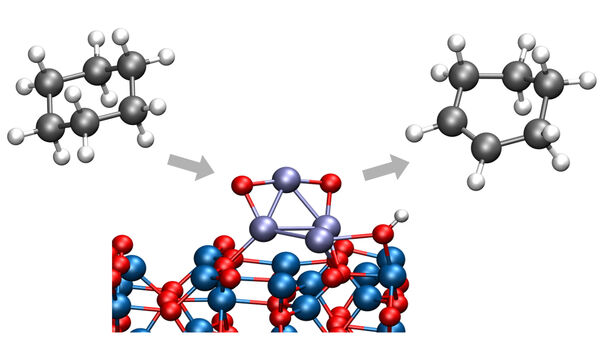
Scientists pioneer new low-temperature chemical conversion process
"Researchers team up to improve chemicals used in a wide range of industrial processes. Chemists spend a great deal of time and energy trying to get chemical reactions to begin or to speed up — but sometimes it can be just as important to stop them before they go too far. In a recent study from the U.S. Department of Energy’s (DOE) Argonne National Laboratory, chemists have identified a way to convert cyclohexane to cyclohexene or cyclohexadiene, important chemicals in a wide range of industrial processes. Importantly, this process takes place at low temperatures, eliminating the creation of carbon dioxide that would have resulted from an unwanted breaking of carbon-carbon bonds. “The fact that we can make this conversion happen at lower temperatures protects the intermediate dehydrogenation products cyclohexene and cyclohexadiene from being further converted unwanted products.” — Stefan Vajda Cyclohexane is an important starting molecule in a wide range of chemical reactions, according to Argonne chemist Stefan Vajda, now at the J. Heyrovský Institute of Physical Chemistry in Prague. However, without a suitable catalyst to initiate the reaction, converting cyclohexane into useful products typically requires elevated temperatures generated through the expenditure of a great deal of energy, and the process may suffer from poor selectivity as well." [...]
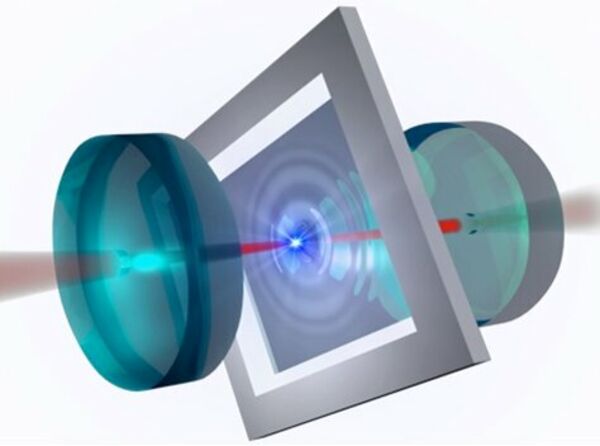
Researchers Use Light to Create a One-way Street for Mechanical Energy
"Is it possible to create a “one-way street” for mechanical energy that only allows heat and sound to flow in one direction? In most standard set-ups, this is impossible: if acoustic energy can flow in one direction, then it can also flow in the reverse direction. Finding new ways to break this basic symmetry has sparked the interest of many scientists and engineers in recent years. Such one-way streets could be extremely useful in a variety of applications ranging from thermal management to communications systems. A new experiment involving researchers with the Institute for Molecular Engineering at the University of Chicago and Yale University now demonstrates that by using light to mediate the interaction between two mechanical systems, they can create a controllable one-way channel for the flow of vibrational energy and heat. The study, published today in Nature, was based on theory developed earlier by the University of Chicago team and provides proof that the basic theory works." [...]
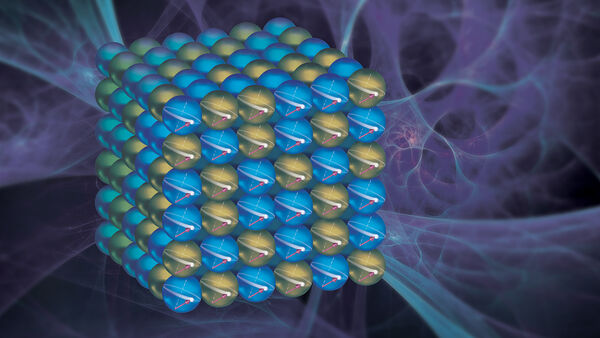
The spin doctors: Researchers discover surprising quantum effect in hard disk drive material
"Scientists find surprising way to affect information storage properties in metal alloy. Sometimes scientific discoveries can be found along well-trodden paths. That proved the case for a cobalt-iron alloy material commonly found in hard disk drives. As reported in a recent issue of Physical Review Letters, researchers from the U.S. Department of Energy’s (DOE) Argonne National Laboratory, along with Oakland University in Michigan and Fudan University in China, have found a surprising quantum effect in this alloy. “When you drive your car down a flat highway with no wind, the dissipating energy from drag is the same regardless of the direction you travel. With the effect we discovered, it’s like your car experiences more drag if you’re traveling north-south than if you’re traveling east-west.” — Argonne materials scientist Olle Heinonen The effect involves the ability to control the direction of electron spin, and it could allow scientists to develop more powerful and energy-efficient materials for information storage." [...]
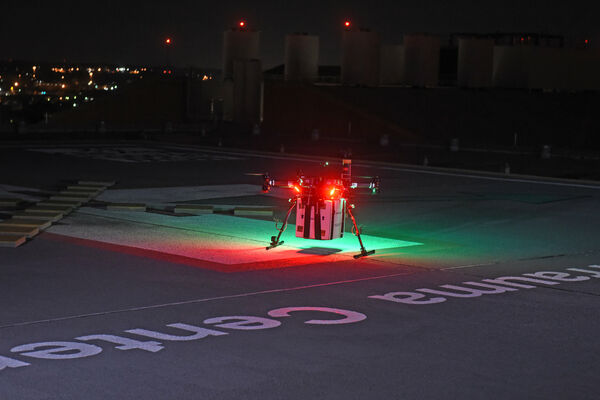
University of Maryland's Schools of Medicine and Engineering First to Use Unmanned Aircraft to Successfully Deliver Kidney for Transplant at University of Maryland Medical Center
"New Technology Could Help Expand Donor Access to Transplantation In a first-ever advance in human medicine and transplantation, an unmanned aircraft has delivered a donor kidney to surgeons for successful transplantation in a patient with kidney failure. Transplant physicians and researchers at the University of Maryland School of Medicine (UMSOM) and the University of Maryland Medical Center (UMMC) in Baltimore joined aviation and engineering experts at the Unmanned Aircraft Systems (UAS) Test Site, part of the A. James Clark School of Engineering at the University of Maryland, College Park to complete this landmark flight. The research was also done in collaboration with The Living Legacy Foundation of Maryland (The LLF), a non-profit organ procurement organization. “As a result of the outstanding collaboration among surgeons, the Federal Aviation Administration (FAA), engineers, organ procurement specialists, pilots, nurses and, ultimately, the patient, we were able to make a pioneering breakthrough in transplantation,” said Joseph Scalea, MD, Assistant Professor of Surgery at UMSOM, who is the project leader and one of the surgeons who performed the transplant at UMMC. Prior to this transplant, Dr. Scalea’s team was the first ever to test the drone system by transporting saline, blood tubes and other materials between the launch site and the hospital helipad. Dr. Scalea also noted that the flight took place in an urban environment, over a densely-populated area." [...]
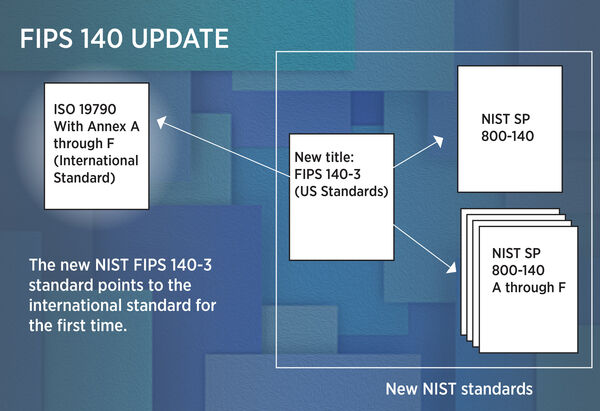
NIST Links Federal Encryption Testing to International Standard for First Time
"Update to Federal Information Processing Standard aims to help companies get products to market faster. Electronic device manufacturers should find it less time-consuming to bring their wares to both the U.S. and international markets as a result of new requirements issued by the National Institute of Standards and Technology (NIST), which has updated the Federal Information Processing Standard (FIPS) for testing the effectiveness of a device’s data encryption. Virtually all devices that receive and process electronic data—hardware used in laptops and cell phones as well as software that also exchanges information through networks—use some form of encryption to protect this data from prying eyes. FIPS 140-3: Security Requirements for Cryptographic Modules specifies the requirements a device’s encryption system must meet if it is to be used by the federal government. The standard affects the broader IT market because of the number of other organizations that interact with the government. Announced today on the Federal Register, the newly released FIPS 140-3 modernizes the standard and essentially makes the U.S. standard a “pointer” indicating that manufacturers should now use the international standard, which NIST helped to develop." [...]
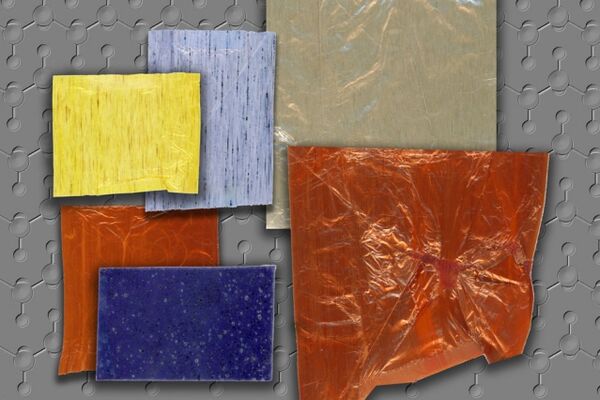
Researchers tune material's color and thermal properties separately
"Polymers could be designed to reflect or trap heat, regardless of hue. The color of a material can often tell you something about how it handles heat. Think of wearing a black shirt on a sweltering summer’s day — the darker the pigment, the warmer you’re likely to feel. Likewise, the more transparent a glass window, the more heat it can let through. A material’s responses to visible and infrared radiation are often naturally linked. Now MIT engineers have made samples of strong, tissue-like polymer material, the color and heat properties of which they can tailor independently of the other." [...]
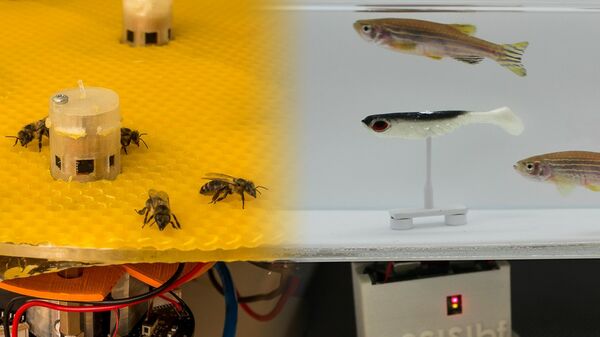
Robots enable bees and fish to talk to each other
"Through an imaginative experiment, researchers were able to get two extremely different animal species located far apart to interact with each other and reach a shared decision with the help of robots. Bees and fish don’t often have the occasion to meet, nor would they have much to say to each other if they did. However, under the ASSISIbf project, engineers from EPFL and four other European universities* were able to get groups of bees and fish to communicate with each other. The bees were located in Austria and the fish in Switzerland. Through robots, the two species transmitted signals back and forth to each other and gradually began coordinating their decisions. The study was published today in Science Robotics." [...]
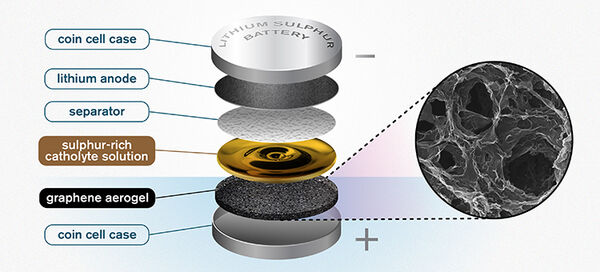
Graphene sponge paves the way for future batteries
"To meet the demands of an electric future, new battery technologies will be essential. One option is lithium sulphur batteries, which offer a theoretical energy density roughly five times that of lithium ion batteries. Researchers at Chalmers University of Technology, Sweden, recently unveiled a promising breakthrough for this type of battery, using a catholyte with the help of a graphene sponge. The researchers’ novel idea is a porous, sponge-like aerogel, made of reduced graphene oxide, that acts as a free-standing electrode in the battery cell and allows for better and higher utilisation of sulphur. A traditional battery consists of four parts. First, there are two supporting electrodes coated with an active substance, which are known as an anode and a cathode." [...]
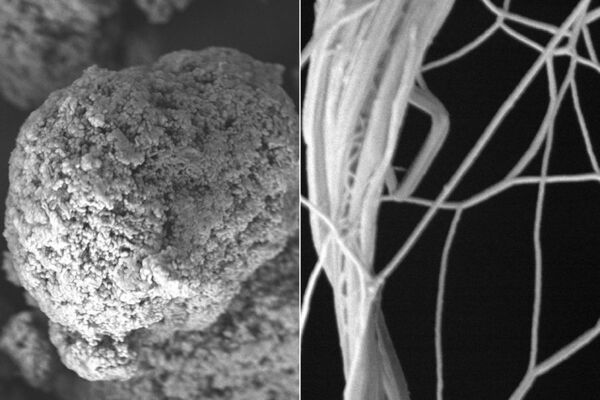
New polymer films conduct heat instead of trapping it
"Material may replace many metals as lightweight, flexible heat dissipators in cars, refrigerators, and electronics. Polymers are usually the go-to material for thermal insulation. Think of a silicone oven mitt, or a Styrofoam coffee cup, both manufactured from polymer materials that are excellent at trapping heat. Now MIT engineers have flipped the picture of the standard polymer insulator, by fabricating thin polymer films that conduct heat — an ability normally associated with metals. In experiments, they found the films, which are thinner than plastic wrap, conduct heat better than ceramics and many metals, including steel. The team’s results, published in the journal Nature Communications, may spur the development of polymer insulators as lightweight, flexible, and corrosion-resistant alternatives to traditional metal heat conductors, for applications ranging from heat dissipating materials in laptops and cellphones, to cooling elements in cars and refrigerators." [...]
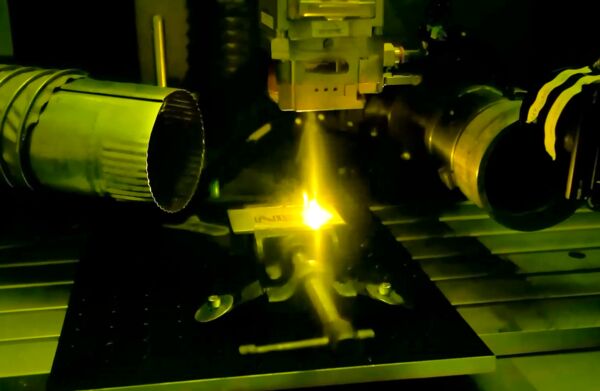
NIST Research Sparks New Insights on Laser Welding
"In celebration of National Welding Month, NIST scientists discuss their ambitious project to understand the basic principles of laser welding better than ever before. On its surface, the work is deceptively simple: Shoot a high-power laser beam onto a piece of metal for a fraction of a second and see what happens. But researchers say the physics of laser welding is surprisingly complex. A better understanding of the interaction between laser and metal could give industry more control over laser welding, a technology that is becoming increasingly popular in manufacturing. For the past three years, scientists at the National Institute of Standards and Technology (NIST) have been collecting data on the most fundamental aspects of laser welding. The scope of their study is narrow, but the measurements of this complicated process are more accurate and comprehensive than any data ever collected on the subject, the researchers say." [...]
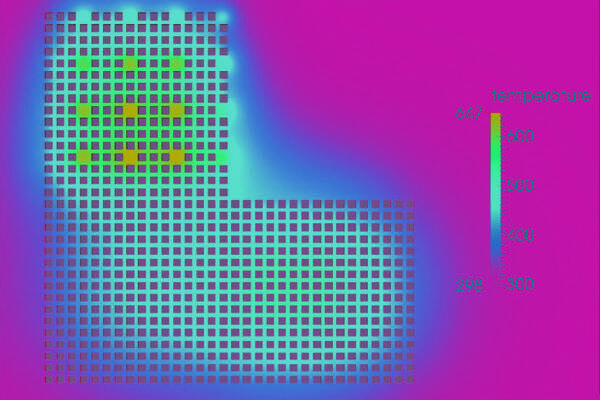
12,000 holes per second with 1 µm diameter
"A new generation of ultrafast process technology is on the market. Higher average laser power and greater pulse energy promise higher throughput and efficiency. When processing microfilters, for example, this makes it possible to drill hole sizes down to below one micrometer much more quickly. When scaling the processes, there are some non-trivial interaction mechanisms to contend with, which were one of the topics of the “5th UKP-Workshop: Ultrafast Laser Technology“ in Aachen. Ultrafast lasers with pulse durations in the picosecond and femtosecond range have experienced a major boom over the past few years. Several innovations in process technology permit ultrafast laser processes to be used in industrial fields such as consumer electronics." [...]
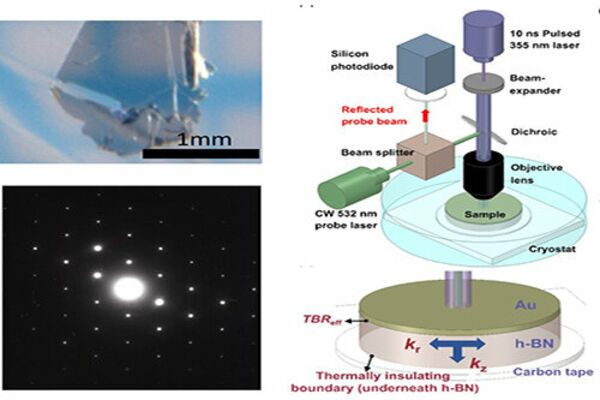
New material to pave the way for more efficient electronic devices
"Researchers at the University of Bristol have successfully demonstrated the high thermal conductivity of a new material, paving the way for safer and more efficient electronic devices – including mobile phones, radars and even electric cars. The team, led by Professor Martin Kuball at the Center for Device Thermography and Reliability (CDTR)[MK1] , found that by making an ultra-pure version of Boron Nitride it was possible to demonstrate its thermal conductivity potential for the first time, which at 550W/mk is twice that of copper. The paper: Modulating the thermal conductivity in hexagonal boron nitride via controlled boron isotope concentration is published today in Communications Physics. Professor Kuball explained: “Most semiconductor electronics heat up when used. The hotter they get, the greater the rate at which they degrade, and their performance diminishes. As we rely more and more upon our electronic devices, it becomes increasingly important to find materials with high thermal conductivity which can extract waste heat." [...]
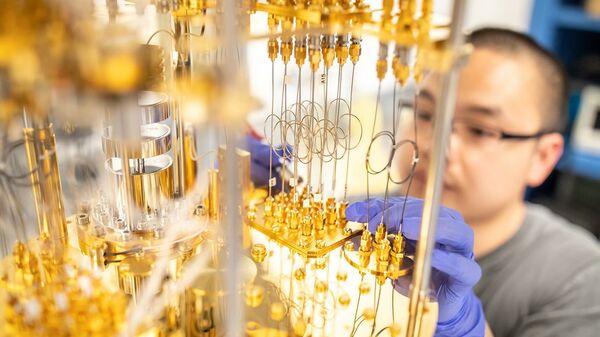
Scientists connect quantum bits with sound and over record distances
"Two studies show breakthroughs that could boost quantum technology Scientists with the Institute for Molecular Engineering at the University of Chicago have made two breakthroughs in the quest to develop quantum technology. In one study, they entangled two quantum bits using sound for the first time; in another, they built the highest-quality long-range link between two qubits to date. The work brings us closer to harnessing quantum technology to make more powerful computers, ultra-sensitive sensors and secure transmissions. “Both of these are transformative steps forward to quantum communications,” said co-author Andrew Cleland, the John A. MacLean Sr. Professor of Molecular Engineering at the IME and UChicago-affiliated Argonne National Laboratory. A leader in the development of superconducting quantum technology, he led the team that built the first “quantum machine,” demonstrating quantum performance in a mechanical resonator." [...]
Projetos Maker
Diversos Projetos interessantes.
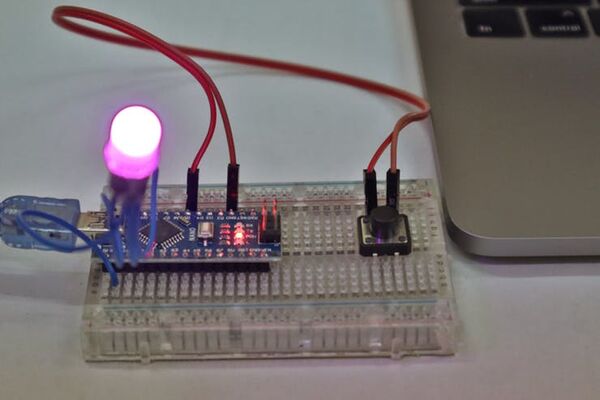
Single Switch Multiple Functions
"Single tap, double tap, triple tap, four-tap, Hold, Single tap and hold. In this project, I am going to teach you how to give multiple functions in a single push switch. Below is the list of different ways of using the switches for different functions, Single Tap Double Tap Triple Tap Four Tap Hold Tap and hold "there can be more if you can be creative"" [...]
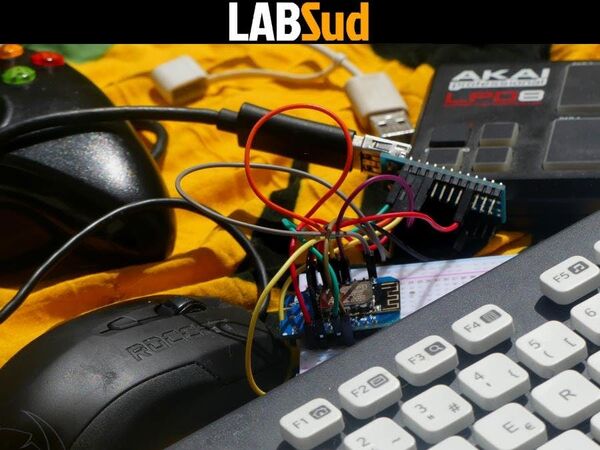
Plug Any USB Device on an ESP8266
"Did you know you could plug USB devices on an Arduino or ESP? Keyboard, mouse, game controller, Midi controller, you name it! I was having fun with Mozzi, an audio synthesis library (https://sensorium.github.io/Mozzi/), when I realized I will have to build a controller to really use it at his full potential. What if I could just plug a keyboard or a Midi controller? That would be so much easier... What?!" [...]
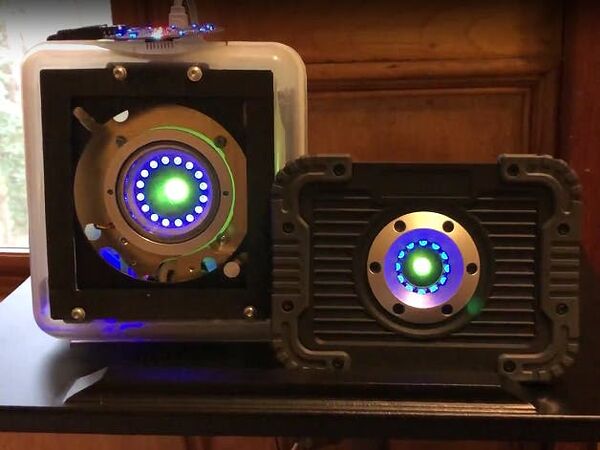
Olive - Your Animatronic Home Assistant
"Olive is a home voice assistant you can actually look in the eye! Animatronic features allow her to have a real presence in your home! Toward a More Personal Assistant Voice technology surrounds us everywhere, listening from our phones, computers, or even our remote controls. Unfortunately, they lack a critical element that I believe is essential for a home automation assistant: an actual presence. Additionally, most personal assistant technologies rely on the cloud to function. Is it really a "personal" assistant if it requires constant connectivity and data transfer to an external system?" [...]
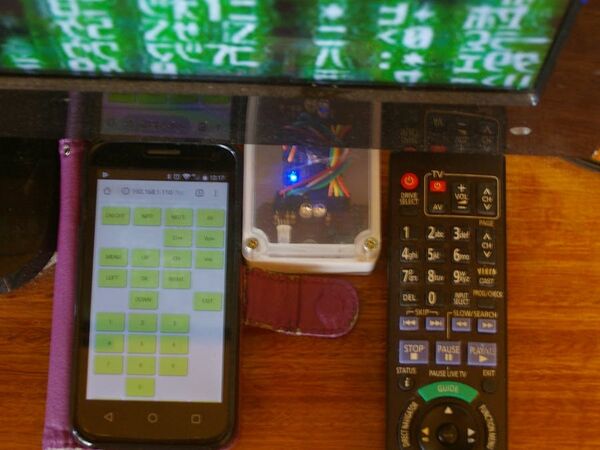
IoT IR Programmable Transcoder - TV Remote on Steroids
"One code goes in, another comes out... A different way of having a single remote without needing a universal one. Background You when something annoys you so much you just have to fix it especially if every one else nags you. Our television remote falls in this category, its a "Dick Smith" brand unit and has a dodgy intermittent remote. I've used universal remotes before and even after hours of programming them they are not so flash. So what to do? Our Panasonic DVR we use has a more than adequate universal section built in but in spite of talking to 100s of other devices our TV is not one of them." [...]
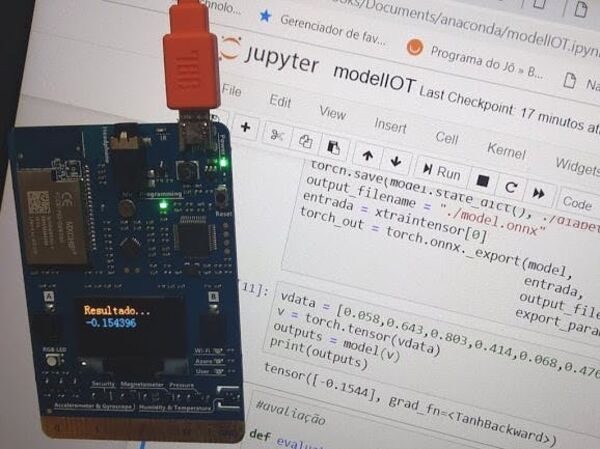
Machine Learning Model Running on Azure IoT Starter Kit
"This tutorial show how to create a machine learning model to predict diabetes in women, compile and run on Azure IoT Starter Kit. Introduction This tutorial show how to create a machine learning model using PyTorch, trained to predict diabetics disease, based on an dataset from UCI Machine Learning Repository. The construction of this model was show by Juliano Viana in they lecture on QCon conference in 2018. Than we use Microsoft Embedded Learning Library to compile this machine learning model into an assembly file. So we used the machine learning model file in assembly to be run by a program within the Microsoft Azure IoT Starter Kit. Creating and training the machine learning model We use Anaconda as our main development tool, we install PyTorch and other libraries like: pandas, sklearn, matplotlib, and torch.onnx that we will explain later." [...]
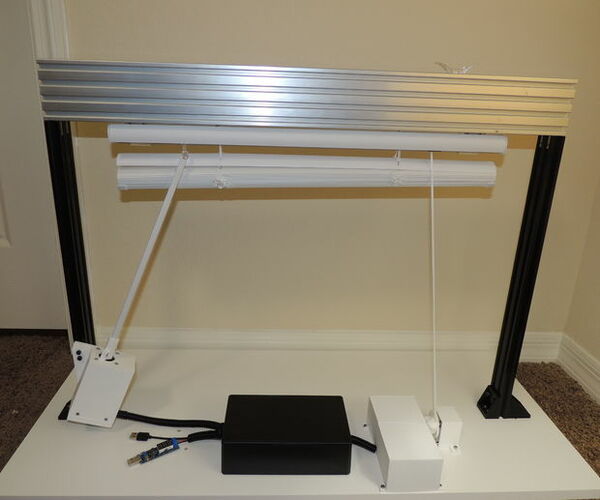
Robotic Operated Window Blinds
"This instructable was created in fulfillment of the project requirement of the Makecourse at the University of South Florida (www.makecourse.com). This project is on automated window blinds that can be controlled from your phone via Bluetooth. The system uses a geared dc motor to wind / unwind the cord coming from the blinds in order to raise / lower it as well as a 2nd motor which rotates the rod from the blinds to open / close it. It can easily be powered from two USB wall adapters, like what is typically used for charging phones and other small electronic devices, or to save a wall outlet you can purchase a wall adapter that has two USB ports on it. With this wireless system you no longer have to get up to adjust your blinds, simply grab your phone and open the app! " [...]
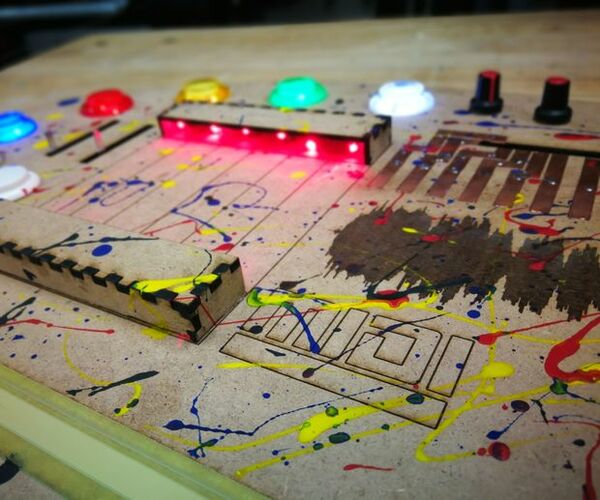
MIDI Sound Palette
"This project started as a "Stone Soup" instrument that was designed around all of the extra sensors, switches, and other parts lying in my parts bin. The instrument is based around the MIDI_Controller.h Library and the TouchSense capabilities that the Teensy 3.2 board offers. Here is a list of what I used:Teensy 3.2 - Link (5) 10k rotary potentiometers - Link (2) 10k sliding potentiometers - Link (5) LED Pushbuttons - Link 10k Rotary Softpot Touch potentiometer - Link 10k 200mm Softpot Touch Potentiometer - Link (2) Push Buttons - Link (3) Piezo Drum Senors - Link (6) 5v Lasers - Link (6) Photoresistors - Link Resistors (10K) Copper Tape Soldering Tools" [...]
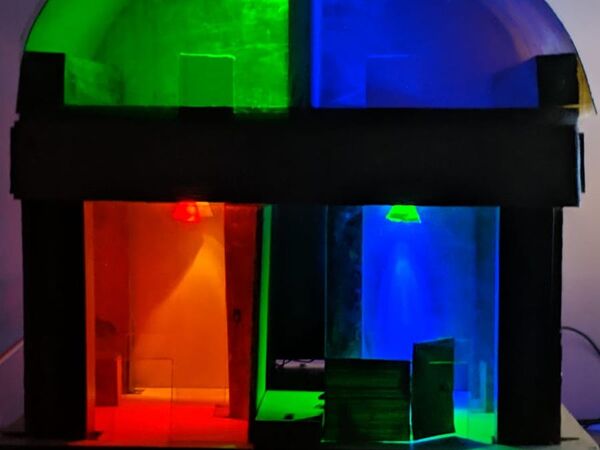
Home automation using Raspberry Pi Matrix voice and Snips
"Controlling lights, door and light intensity using Raspberry Pi, Matrix Voice and Snips. The story Home automation allows us to control household electrical appliances like light, door, fan, and so on. Home automation not only refers to reduce human efforts but also energy efficiency and time saving. The aim of the project is to 1. Conserve energy so that we can use natural light instead of artificial light to brighten up our homes this can be done by controlling brightness of the lights. Note:- I also added light on/off and door control." [...]
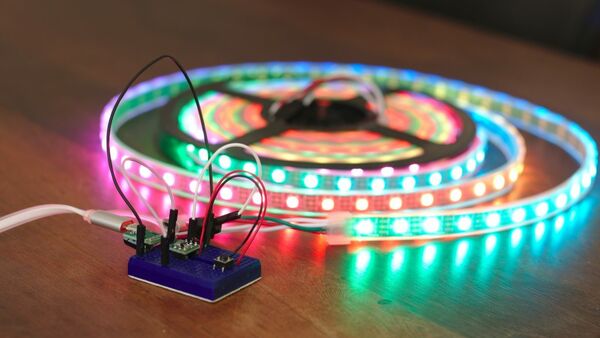
3 cent PMS150C MCU driving 300 WS2812B LED's
"The 3 cent Padauk PMS150C is.. Interesting to say the least. First of all there’s a lot this little MCU doesn’t do. It doesn’t have a lot of code space (1K Word), it doesn’t have a lot of RAM (64 bytes) and it doesn’t even do hardware multiplication. It doesn’t have an instruction for loading data from ROM either(Though there are ways of getting around this – but that’s a subject for another post). And of course – you can only program it ONCE." [...]
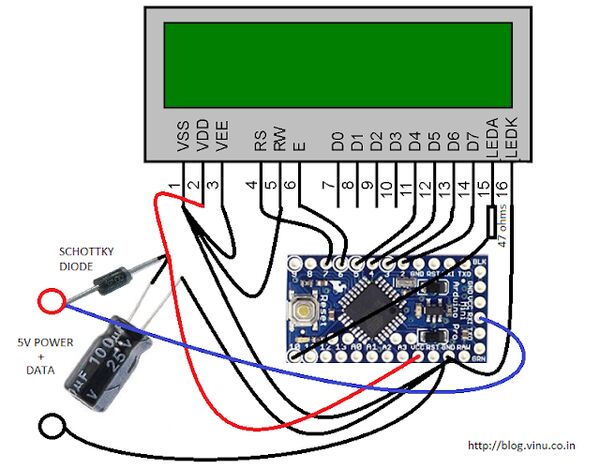
16 x 2 LCD controlled via power line
"This 16x2 LCD is too traditional and still very much popular in the world of electronics and embedded system. I remember I started programming on PIC for displaying text on these LCDs around 8 years ago. Now I just found one of these LCD from my junk box and want to try it out because it is nostalgic. It reminded me the 4 bit data lines plus additional 2 control pins, a total of 6 minimum signal pins and obviously additional 2 mandatory power wires +5v and GND, so a total of 8 wires. If this display is designed in 2019, for sure it will have only Vcc, GND and a single wire data pin or in worst case the 2 wire i2c or TWI. Then I just thought why even 1 wire for data?" [...]
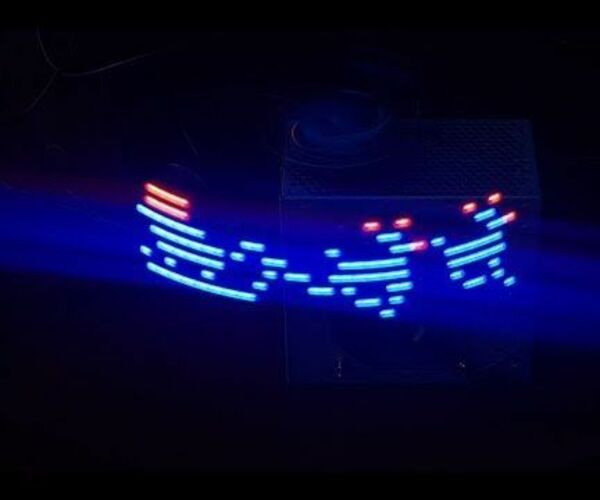
Advent Lantern With POV Animation
"Persistence of Vision (POV) projects are around for quite some time, simple and cheap DIY kits are even available for online purchase. POV is based on an optical illusion where we see illuminated objects after the object is no longer illuminated even if only for a short while. Traditional POV projects feature still images based on this principle or running clocks at most. However, nothing prevents to project animations using microcontrollers of sufficient clockspeed and smart RGB LEDs. This particular animation is of a reindeer dragged Christmas sleight for Advent decoration that can be remotely controlled by any WiFi enabled mobile device with web browser. The lantern is powered by the Wemos ESP8266 D1 Mini microcontroller of the Arduino family." [...]
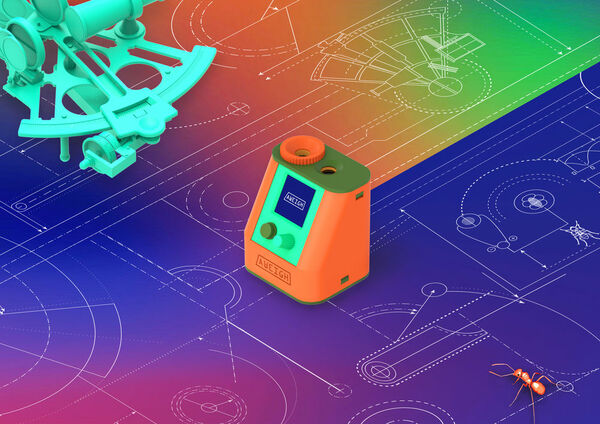
an open-source alternative to GPS, called Aweigh
"Aweigh is an open navigation system that does not rely on satellites: it is inspired by the mapping of celestial bodies and the polarized vision of insects. Ancient seafarers and desert ants alike use universally accessible skylight to organize, orient, and place themselves in the world. Aweigh is a project that learns from the past and from the microscopic to re-position individuals in the contemporary technological landscape. Networked technolgies that we increasingly rely on undergo changes that are often beyond our control. Most smartphone users require government-run satellites to get around day by day, while consequences of Brexit are calling into question the UK’s access to the EU’s new satellite system, Project Galileo. Aweigh is a set of tools and blueprints that aims to open modern technologies to means of democratization, dissemination, and self-determination." [...]
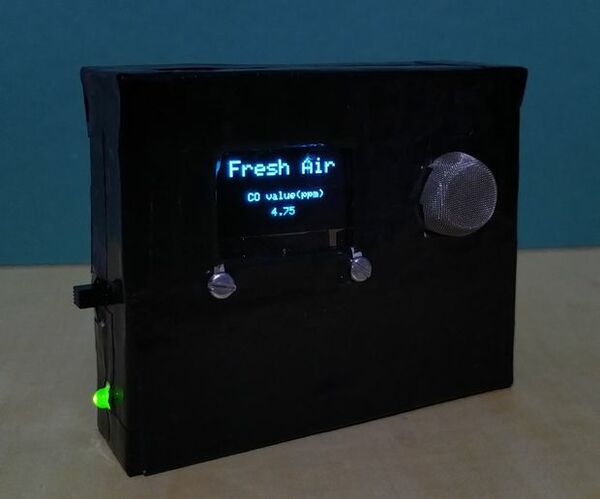
Pocket Size CO (carbon Monoxide)detector
"As the name says this is a pocket sized CO detector which is used to detect Carbon monoxide in air our goal was to make this device portable and which fits in pocket size. pocket size in sense it should be also affordable in budget.Now a days we are facing problem of air Pollution due to industrialization every day harmful gases are released into air and even vehicles releasing harmful Carbon monoxide. So we thought of making this project which we could carry anywhere and check the air condition whether it is clean or polluted. We have build this project in a affordable budget,it costed around 12 USD. " [...]
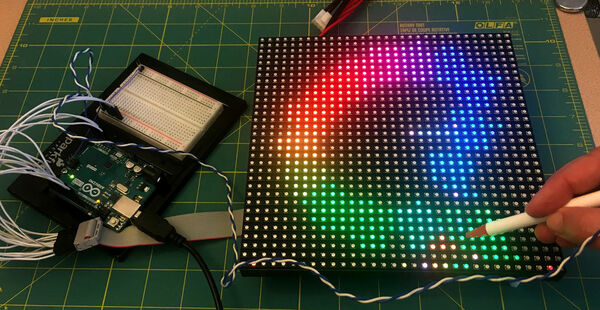
Using a LED Matrix As a Scanner
"Ordinary digital cameras work by using a large array of light sensors to capture light as it is reflected from an object. In this experiment, I wanted to see whether I could build a backwards camera: instead of having an array of light sensors, I have just a single sensor; but I control each of 1,024 individual light sources in a 32 x 32 LED matrix. The way it works is that the Arduino illuminates one LED at a time, while using the analog input to monitor changes in the light sensor. This allows the Arduino to test whether the sensor can "see" a particular LED. This process is repeated for each of the 1,024 individual LEDs rapidly to generate a map of visible pixels. If an object is placed between the LED matrix and the sensor, the Arduino is able to capture the silhouette of that object, which is lit up as a "shadow" once the capture is complete." [...]
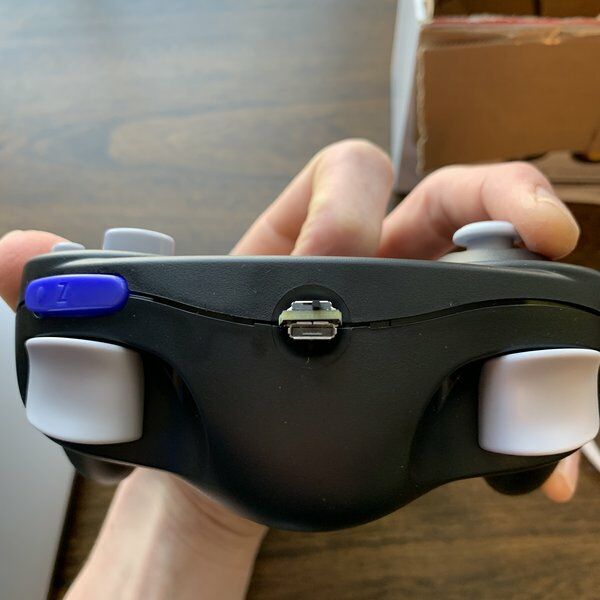
BlueCubeMod: Bluetooth GameCube Controller Mod Kit
"Convert your GameCube controller to Bluetooth for playing on the Switch, emulators and more I love Smash Ultimate on the Switch and also love the feel of an Original Nintendo Gamecube Controller, but there wasnt a great wireless option I was happy about. Nintendo still somewhat supports the GameCube port but I think Bluetooth is the best way to future proof what many believe is one of the best controllers ever made. This is a great mod even for beginners, theres just a little bit of soldering required to hack your own. And if youre hardcore, It should be open source soon. My plan here with the Hackaday Prize is to gather the resources to develop and ship a great mod kit at a reasonable cost. I have a few early versions Ive been putting to the test and I am satisfied with the results, its currently my go to controller for playing Smash Ultimate online." [...]
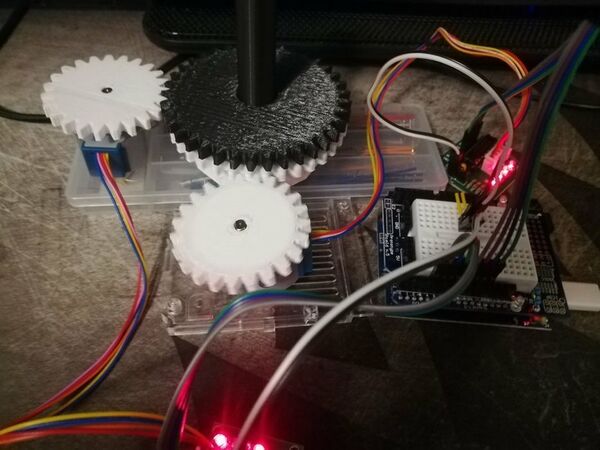
Clockwork
"As I try to brainstorm for an idea for this project, I decided to make something that is usable and be useful for my daily life. Not many things like that can have a two degree of freedom requirement so I decided to make a simple clock to meet the requirement as well as have it display on my desk to show the time. Originally the idea was to make a wristwatch, but the 3D printed part would be too small and the motors that drive the watch would still be too big for a wristwatch. Hence this project, I found spare parts around my apartment and decided to work on this. " [...]
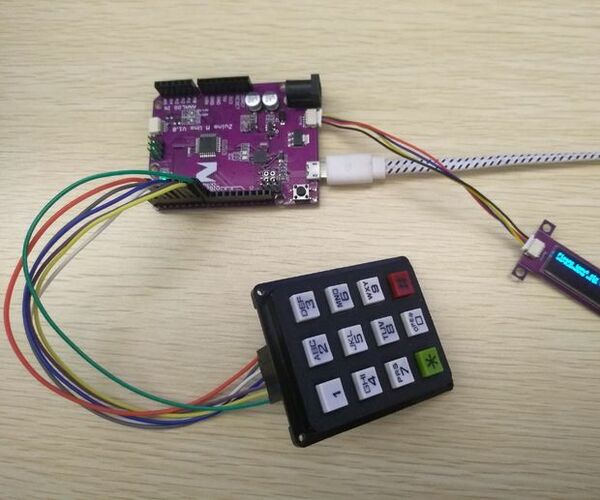
Arduino Digital Code Lock Project Using Matrix Keypad
"Build a digital code lock device with Arduino and Qwiic system using Zio M Uno and a Hex 4x3 Matrix Keypad.Project overviewFor this project, we will build a simple digital code lock that users can enter and key in. In this tutorial, we will show users how a digital code lock system works in an Arduino Interface. By the end of this tutorial you will be able to : Set up a digital code lock with Zio and basic 12 keys keypadBe able to interface with Arduino IDE to program Zio with keypadCreate a program that asks users to enter a six-digit password to unlock Be able to create a new six-digit password Helpful Resources For simplicity purposes, this tutorial assumes that you have a full understanding and the know-how on configuring Zio development boards. For this project, we assume you have already configured Zuino M Uno to interface with Arduino IDE. If you haven't done so we have a separate post on our development board guides. " [...]
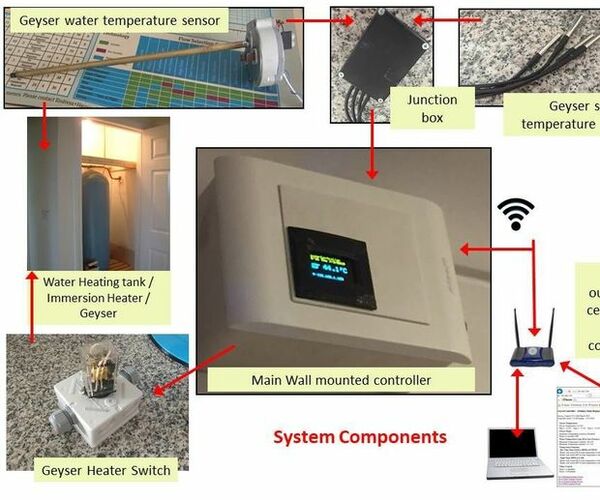
Smart Data Logging Geyser Controller for the Home
"Ever since I started building projects with Arduino and the ESP8266 I have been obsessed with Home Automation and its ability to potentially make life easier and save energy and consequently money. This has been represented in my past published Instructables (See References) and so a challenge was born when I discovered that the geyser in my new home roof space was connected to the mains power 24/7 with no local on/off control and was controlled by a relatively inaccurate internal thermostat not to mention the difficulty to adjust the water temperature setting. The task - how to bring the water temperature control easily to me with an ability to display/record the temperature/power consumption trends over the last 24 hours to allow me to maximise my water temperature when I needed it at the lowest possible power consumption. Main features of the controller include: Water temperature measurement and display Up to 4 extra optional sensors that can be attached to the external skin of the geyser to monitor the geyser external temperatures - used to assess the need for any external geyser insulation. After this exercise is done, you may if you prefer remove the sensors or simply leave them in place to monitor and log the geyser wall temperatures with the water temperature for reference. The firmware auto adapts to the number of sensors connected to it." [...]
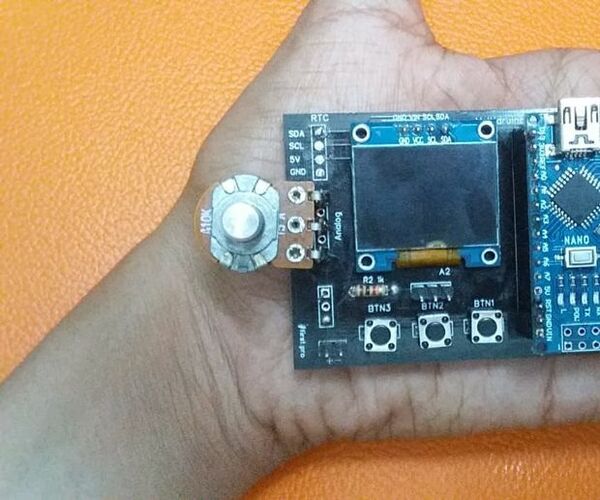
Versano
"I needed a handy multimeter which can be carried easily anywhere. I wanted it to be small and a miniature one in camparison with the normal multimeters.With hours of coding and circuit designing I ended up with making a device which can measure voltage drop, resistor ,battery voltage, and so on.It was quite difficult for me to make a device which can perform all these function at time but I succeded in doing so. A day later an idea struck me that why not to make this multimeter as a multitasking device which can perform various function by updating the code. I thought over this and edited the PCB and added some extra components to it. After editing and customising the PCB i finally ordered the PCB on pcbway.They are awesome PCB mnufacturers from china.They provide high quality PCB at $5 for 10 pieces.I got my PCB's in a week and they were really nice. This is a device which can perform various funtions.It can be manupulated into different devices.As I said eariler that this can be used as a multimeter, but beside this it can be used as a music player.Though this cant be used as a professional music player but it could produce different tones.By pushing different buttons new tones are produced." [...]
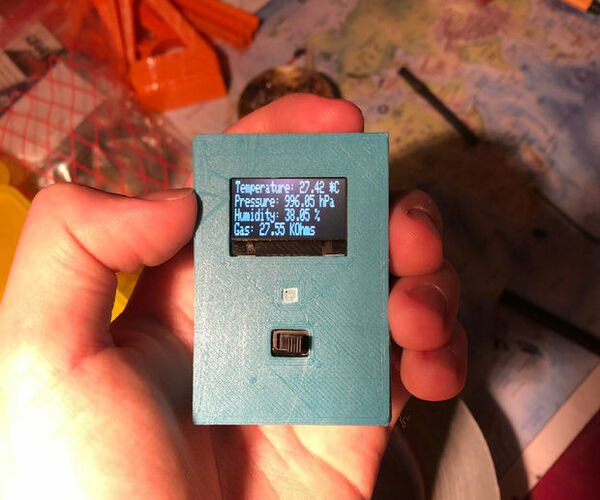
Pocket Weather Station
"Hello everyone and welcome. In this instructable, we'll build a weather station that not only measures temperature, pressure, humidity and air quality, but it also fits in your pocket, so you can measure everywhere you go! It is also very inexpensive to make (around 35$), so it is really a cool project for everyone! If you are ready, we can begin. The sensor used is a BME680 from Bosch. It is a small sensor with tons of functionality." [...]
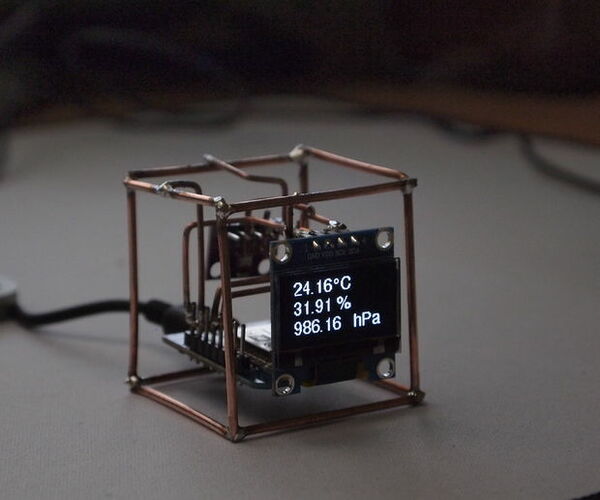
How to Make Pocket Sized IoT Weather Station
"In this instructable you will learn how to make small Weather Cube using the D1 mini(ESP82660) which is connected to your home WiFi, so you can look at it's output anywhere from earth, of course as long as you have internet connection. Overall making this project isn't too difficult nor resource heavy, so it will be perfect as your first IoT project. So let's get started. PS: Keep in mind that this is my first Instructable so not everything will be perfect. :)" [...]
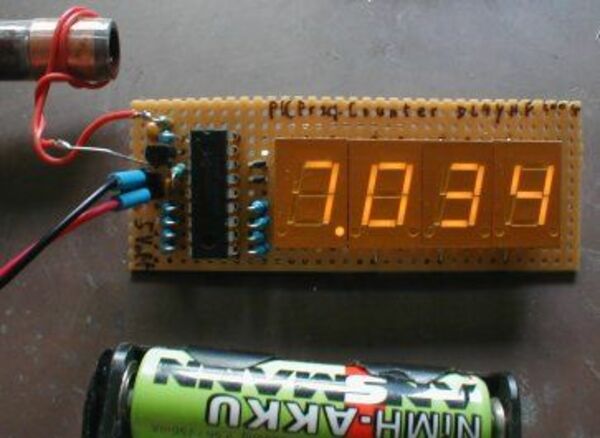
Frequency counter with a PIC and minimum hardware
"This document describes the construction of small frequency counter with a cheap PIC microcontroller and a few seven-segment LED digits. The main features of the frequency counter are: - frequency range 1 Hz ... 50 MHz (prototype worked up to 60 MHz but this exceeds the PIC's timing specifications) - four or five digits resolution (display for example x.xxx kHz, x.xxx MHz, or xx.xx MHz); or 6 digits with F8FII's modification - automatic range switching with different gate times - optional addition or subtraction of a frequency offset (programmable) - optional preamplifier for the input signal - can be built on a single-sided 'breadboard-style' circuit board - firmware available for common-cathode as well as commom-anode displays - (2016: Not sure which of these are used by the "anonymous clones" recently sold on Ebay) - very low component count: a PIC 16F628, - 4 or 5 7-segment LED displays, - a 4- or 20-MHz crystal and a few resistors, - optionally one transistor and a few diodes to drive the 5th digit, - optionally one other transistor for the preamplifier. - since 2006-05: preprogrammed frequency offset for transceivers with 4.0 MHz IF - (see the author's experiences with "Miss Mosquita", a 40 meter QRP transceiver) - optional (configurable) power-saving mode which automatically turns the display off - if the frequency didn't change significantly within 15 seconds" [...]
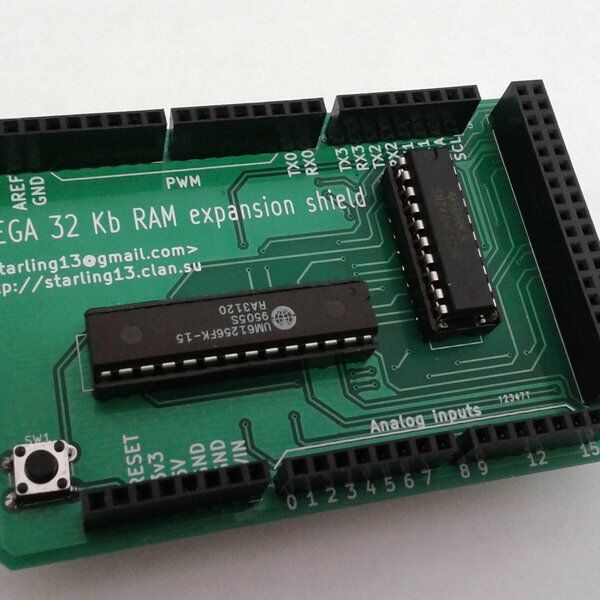
Arduino MEGA 2560 32Kb RAM shield
"A simple Arduino mega SRAM expansion. A simplest possible SRAM expansion for Arduino MEGA 2560 compatible boards. It adds 32Kb to internal 8Kb of Atmega2560 and allows to run much more complex programs on the board.Terminal-BASIC interpreter from https://sourceforge.net/projects/terminal-basic/ [https://sourceforge.net/projects/terminal-basic/] is one of the applications, ready to use this item. " [...]
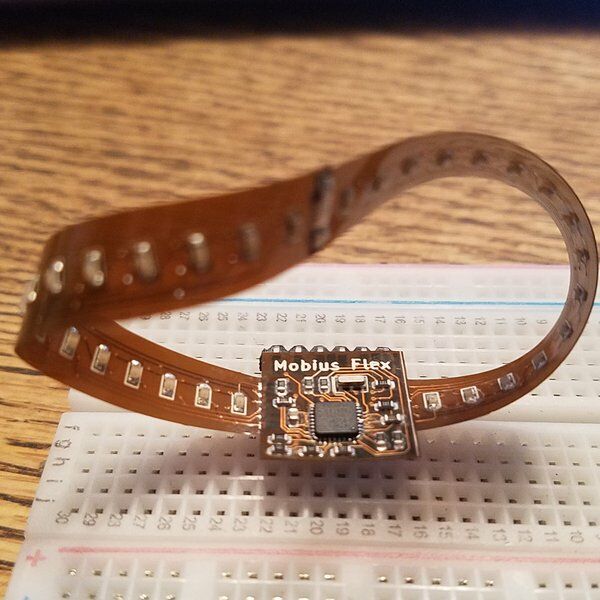
Mobius Flex
"I'm not sure how well a flex PCB will work for an LED-studded mbius strip, but let's find out. Mbius flex is a single-sided ;) flexible PCB (made from double-sided parts) with an Atmega 328p microcontroller and 60x 0603 LEDs designed for the Hackaday Flex PCB contest. It fits within a 13 sq cm total board area, so it can be manufactured using the contest's free PCBs to the best 60 entries. I couldn't wait, so I ordered a set of three from OshPark on my own dime, and this is the result. " [...]
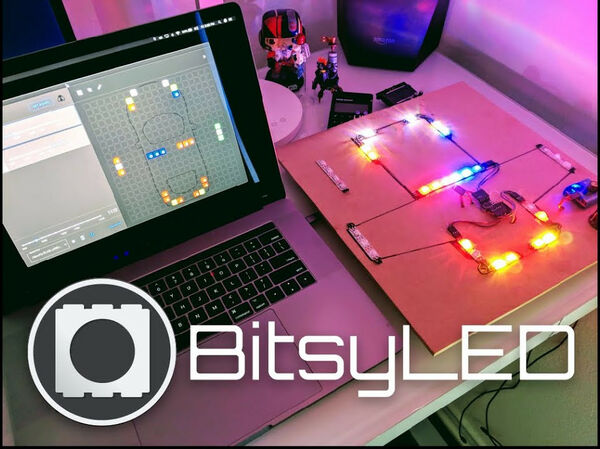
BitsyLED
"A minimal firmware and configurator to drive RGB LED's Introduction BitsyLED is a minimal firmware to drive RGB LED's (WS2811, WS2812, NeoPixels, etc). It's designed for anything RC but also can be used for other projects including Christmas lights, Lego's, or even your real car. BitsyLED is divided into two parts: The Firmware and the Configurator. The firmware can be run on most Arduino compatible boards and I also created a dedicated board (see below) that is targeted primarily for RC purposes. Features By default the firmware is set to the following settings which is the maximum amount supported by the ATTINY. The firmware can be reconfigured through the file config.h." [...]
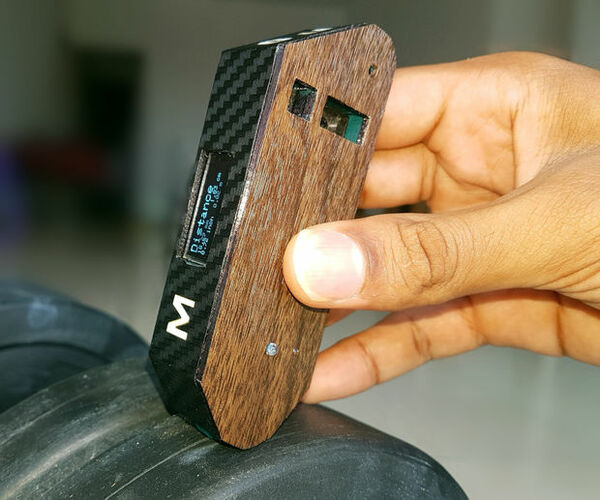
Digital Multi-Function Measuring Tool
"I had always wanted a device that would help me in leveling my 3D printer bed and some other device that would help me get an approximate length of a curved surface so that I could easily cut out the right length of sticker to apply on that surface and thus preventing wastage. So I thought why not combine both ideas and make a single gadget that can do both. At last, I ended up building a device that can not only measure curved lines and surface levelness but can also measure straight line distances and angle of a line. So basically this gadget works as an all in one digital level+ruler+protractor+roll-measure. The device is tiny enough to fit inside a pocket and its batteries can be easily recharged using a phone charger. This device uses an accelerometer and gyroscope sensor to accurately measure surface levelness and angle, a sharp IR sensor to measure the linear length in a non-contact way and an encoder with a wheel which can be rolled over a curved surface or a curved line to get its length." [...]
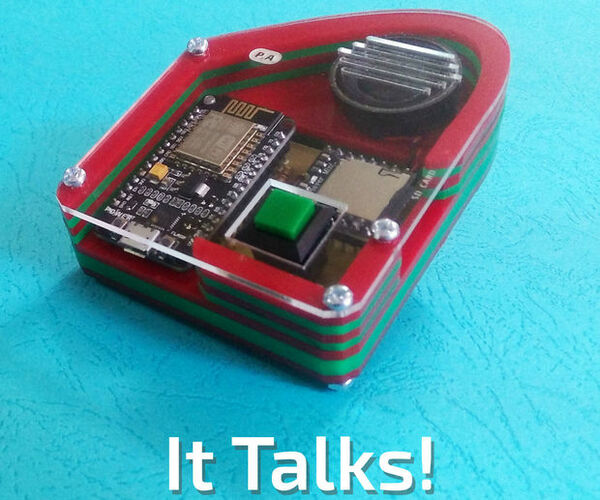
Personal Assistant
"In this instructable, I'm going to show you how you can use the power of ESP8266, creativity in software design and programming, to make something cool and educational. I named it Personal Assistant, cause it's pocket sized, talks to you, and can gives you some useful, and (of course) a few not useful (but still cool) information about weather, time and date, gmail messages, live birth and death rates and etc. I tried to keep the design simple. The device has two user interfaces. A physical push button, and a web based application, that user can access it using a web browser and change the device settings and configuration. How it works?The main components of this project are a Microcontroller and a Music Player module." [...]
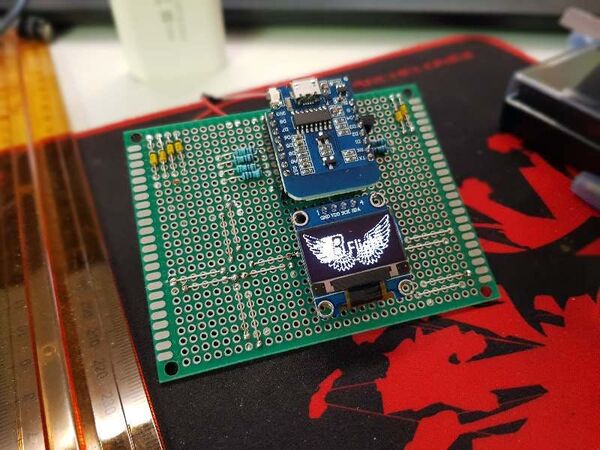
Building Your Own Game Console (ESP8266 and SSD1306)
"Learn how to build a portable game console from scratch and some of the software ecosystem around it to make it easier to develop for. That’s quite a sensationalist title! I didn’t honestly set out to build a console, but it was a fun journey and I thought it would be great to share. There’s a couple learnings I would like to pass on and a couple hopes and dreams I have for the future. Living in South Africa, I sometimes feel a little out of touch with all the cool gadgets that you can obtain overseas relatively easily and seemingly cheaply. *cough*Arduboy *cough*." [...]
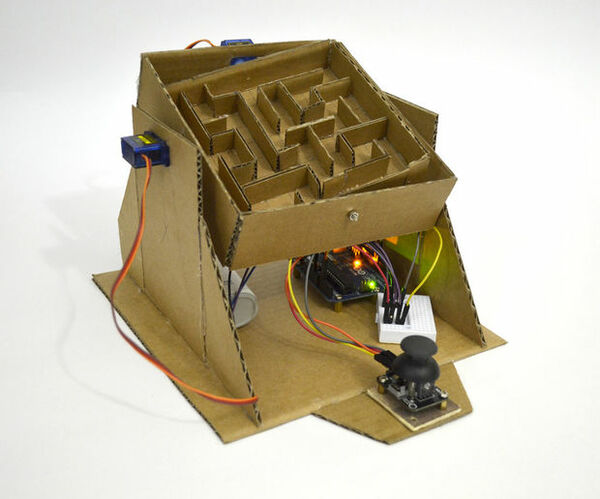
Arduino Marble Maze Labyrinth
"I show you how to make an Arduino controlled Marble Maze Labyrinth board game that is super easy and fun to make. And the best part is it's made From Cardboard. The idea of the game is to navigate the marble through the maze to reach the portal at the end to win the game. Of course, there are many ideas to improve this game and make it more fun, such as pudding some sensors at the end, buzzer to play a tone when while playing or even pinch some holes in the maze itself. The Idea I got bored from the electronic game and I started to search about the physical skill games, so Ive found the Labyrinth and I liked it. What is the Labyrinth?" [...]
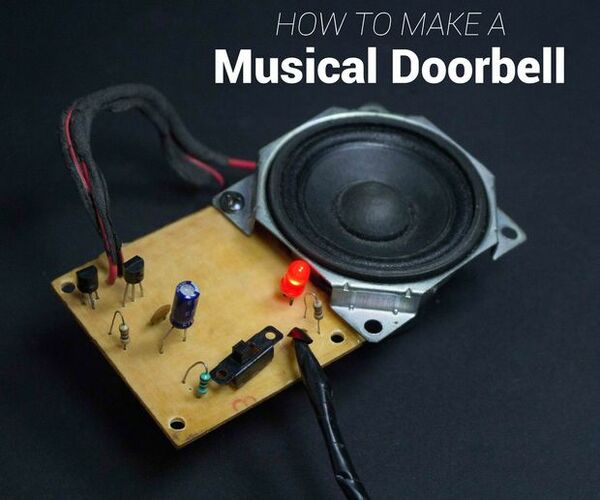
DIY Musical Doorbell
"Learn how to make a simple musical bell using the UM66T melody generator IC. The Melody Generator will play Beethoven's Fr Elise when triggered since it uses the UM66T-19L. There are different versions of this IC, each configured to play a different tune. " [...]
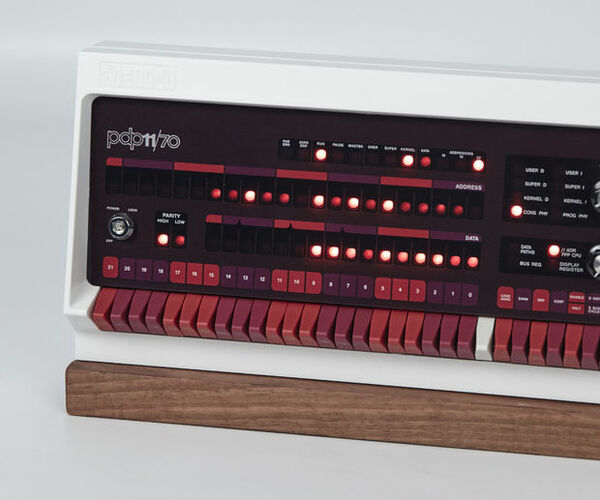
PiDP-11: Replica of the 1970s PDP-11/70
"The PDP-11 was probably the most influential computer ever. It defined what we think of as normal, it was the first machine you could get Unix for, and Windows can trace its roots to the PDP-11's other big-ticket operating system, RSX-11. In 1975, the 11/70 was not only the biggest PDP-11, it was also the last-ever to sport a proper Blinkenlights panel. In red and purple. Sorry. Rose and Magenta." [...]
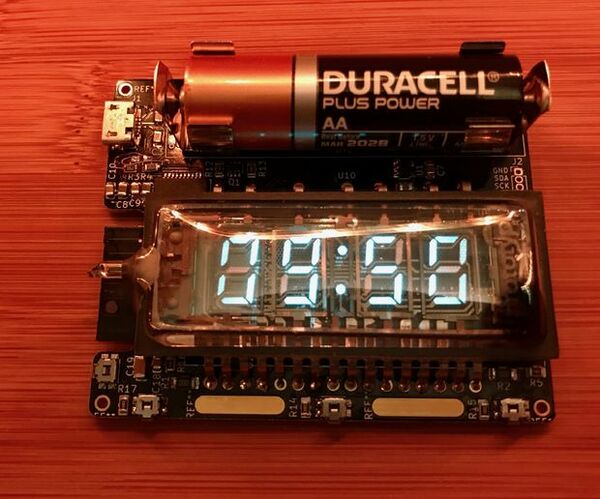
Vacuum Fluorescent Display Watch
"That whole project started a while back with an hackaday article from 2014 in which [Johngineer] build the 'ChronodeVFD', a wristwatch made from an old soviet vacuum fluorescent display. It kind of triggered the 'shut up and take my money' reflex in me, but as it wasn't for sale and didn't have any design details available I quickly had to scrap that. Fast forward a bit, during a late night eBay shopping spree (as one usually does...), I stumbled upon a listing from an Ukrainian guy who sold an IVL2-7/5 VFD - the exact same model used for the ChronodeVFD. After a bit of back and forth with the seller I ended up with a box of these babies neatly wrapped in what seems like Russian newspaper - nice!However, I now realised that I had no clue how to drive these things or even how they worked, so some googling was in order. " [...]
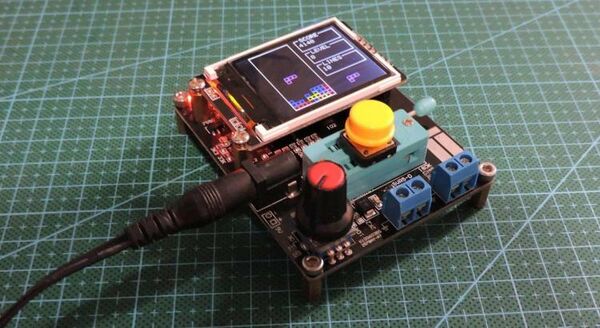
GM328A reverse engineering, new firmware and Tetris!
"Welcome! In this post I talk about the reverse engineering of the GM328A transistor tester. I have drawn the schematics of the board and compiled new firmware for it. As a bonus, I also programmed Tetris for it. Intro Some time ago I wrote an article where I programmed one T3 LCR meter / transistor tester to run a clone of the cute t-rex game from the chrome browser. That LCR meter was one of the most useful instruments I ever had, specially because I have the same digital multimeter since I was 15 and that does not even measure caps." [...]
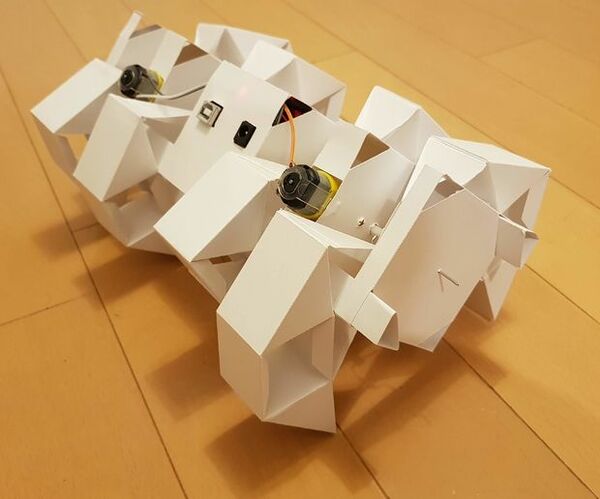
How to Make RC Origami Robot With Arduino
"I like playing with paper. After knowing about Arduino, I have been trying to combine the two. In this instruction, I will try to explain how to make a RC origami robot. " [...]
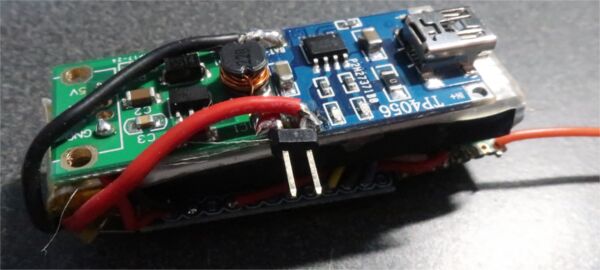
LoRa Repeater
"Sometimes it’s handy to have a repeater to extend the range of a radio transmission. The particular usage I have in mind is to be able to receive telemetry from a landed payload that is too far away (or hidden by buildings or geography) to receive directly, but could possibly be received via a repeater up on a mast or flying on a drone. LoRa makes it easy to make a repeater, so that’s what I’ve done here. And to make it more generally useful, the repeater is programmable for frequency etc. via a Windows program, with the configuration stored in the repeater’s EEPROM. Hardware One of these can be made in about an hour if you’re handy with a soldering iron, using these parts: Arduino Mini Pro LoRa module Small 3.7V LiPo battery USB LiPo charger LiPo –> 5V step-up converter I used a long/slim LiPo but you can use whatever you like." [...]
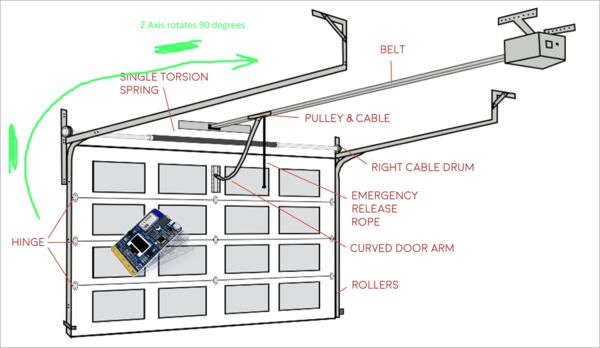
Did I leave the garage door open? A no-code project with Azure IoT Central and the MXChip DevKit
"For whatever reason when a programmer tries something out for the first time, they write a "Hello World!" application. In the IoT (Internet of Things) world of devices, it's always fun to make an LED blink as a good getting started sample project. When I'm trying out an IoT platform or tiny microcontroller I have my own "Hello World" project - I try to build a simple system that tells me "Did I leave the garage door open?" I wanted to see how hard it would be to use an Azure IoT MXChip DevKit to build this little system. The DevKit is small and thin but includes Wifi, OLED display, headphone, microphone, sensors like temperature, humidity, motion, pressure sensors." [...]
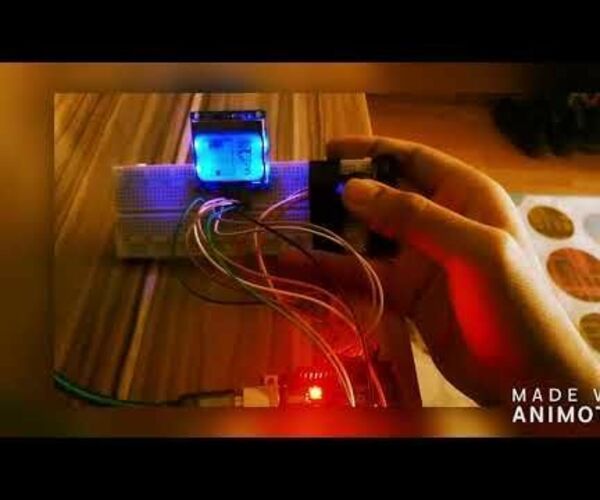
Space Race Game Version 2
"Hey everyone. Before this game version , published first version of game. Today, will show you Space Race Game version 2. Let's look steps..." [...]
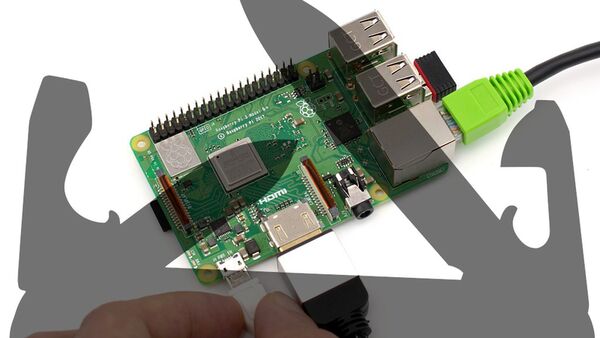
Raspberrypi As Poor Man's Hardware Hacking Tool
"I have been wanting to write this blog for quite some time, either I was busy or lazy. I have been asked by so many people on the list of hardware to buy to get started with hardware hacking. To be honest, there are a lot of products available, but not many target beginners. In this blog i will cover about using SPI, I2C, JTAG/SWD and JTAGenum using Raspberry Pi. I will be using Raspberry pi zero w, as it is dead cheap and small. " [...]
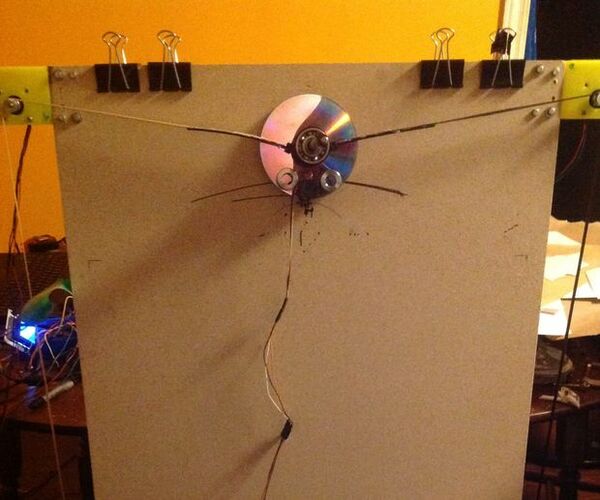
Polargraph Drawbot
"Well, if you have decided to build yourself a polargraph, this is your instructable! A polargraph is a computer controlled drawing machine. Motors are fastened on the two upper corners of the drawing surface. They are equipped with gear pulleys. These pulleys run two lengths of cogged belts. These belts are attached in the center to a gondola." [...]
That's all Folks!


